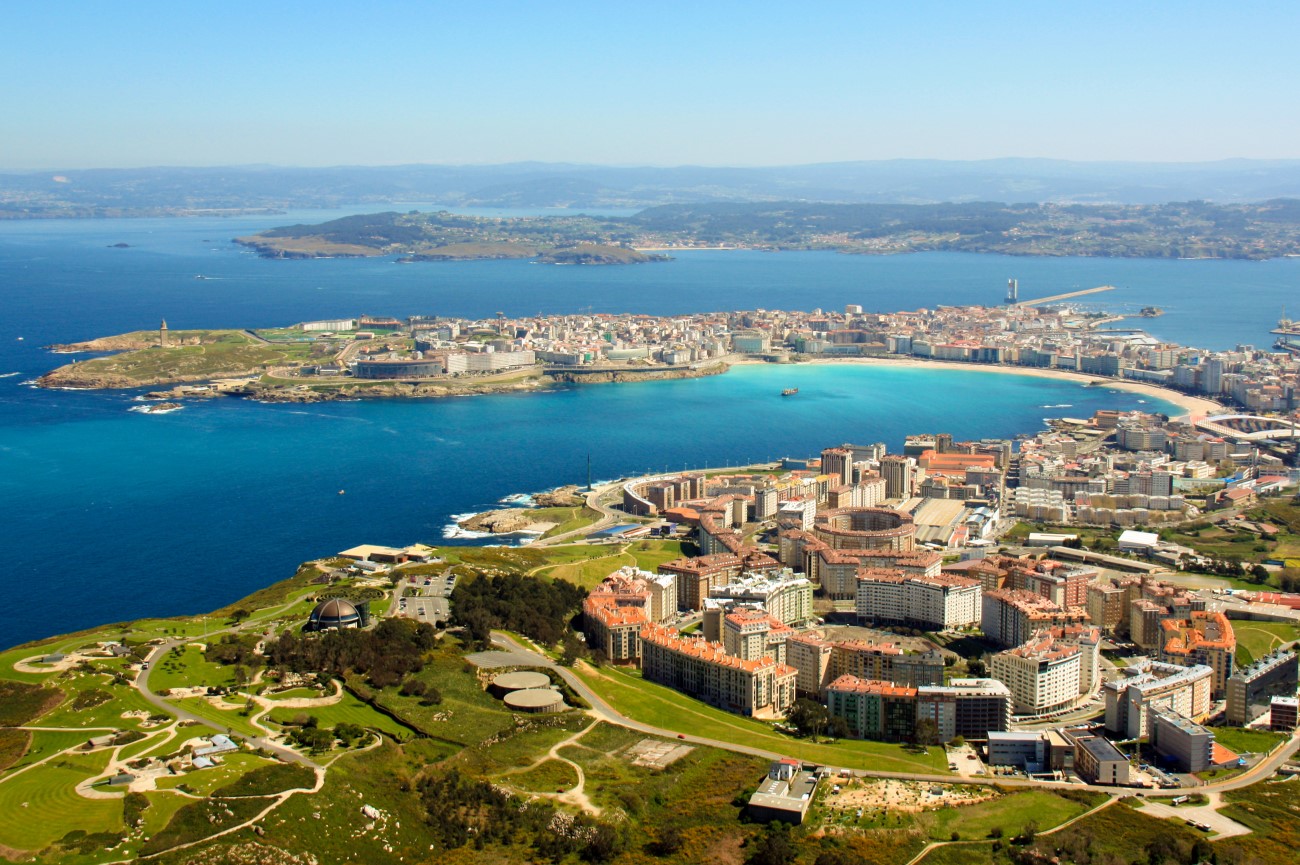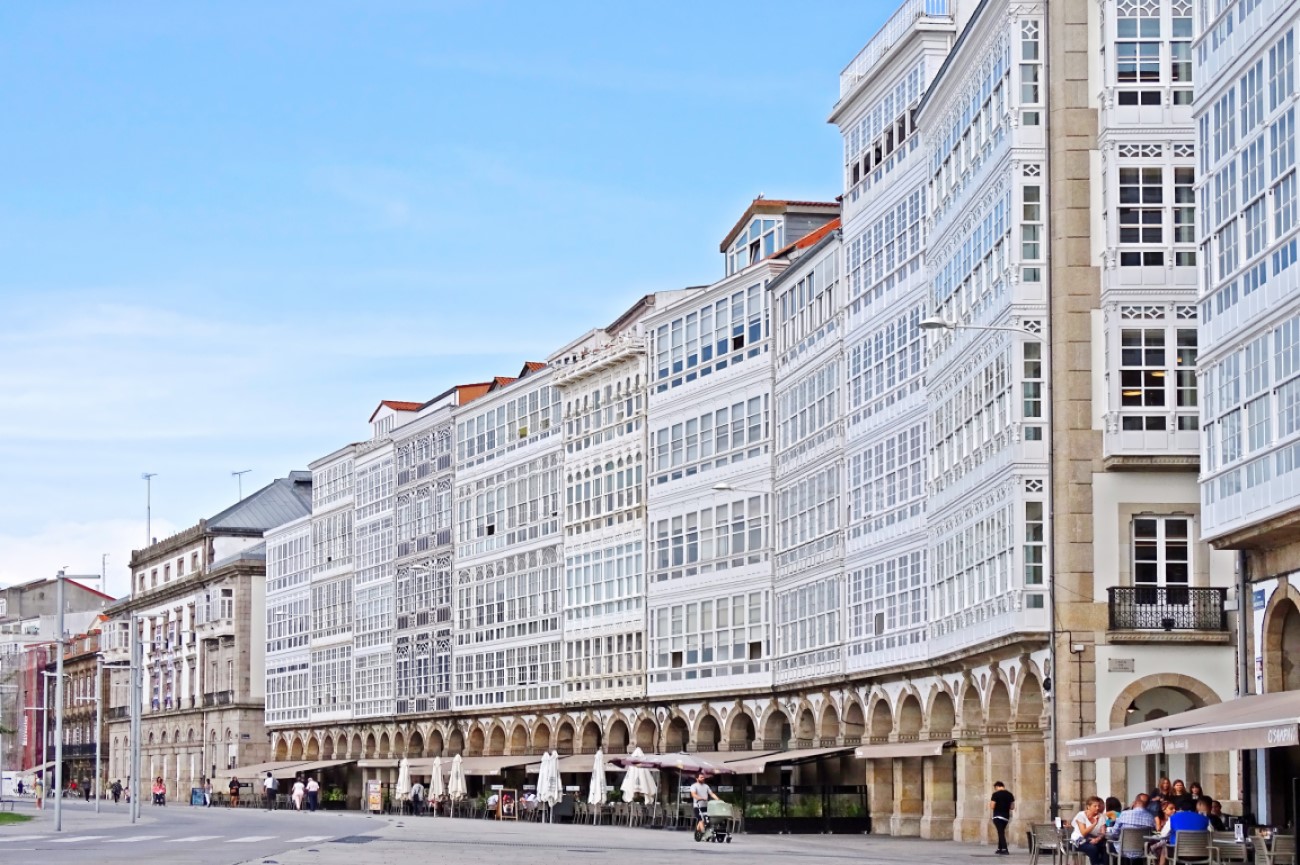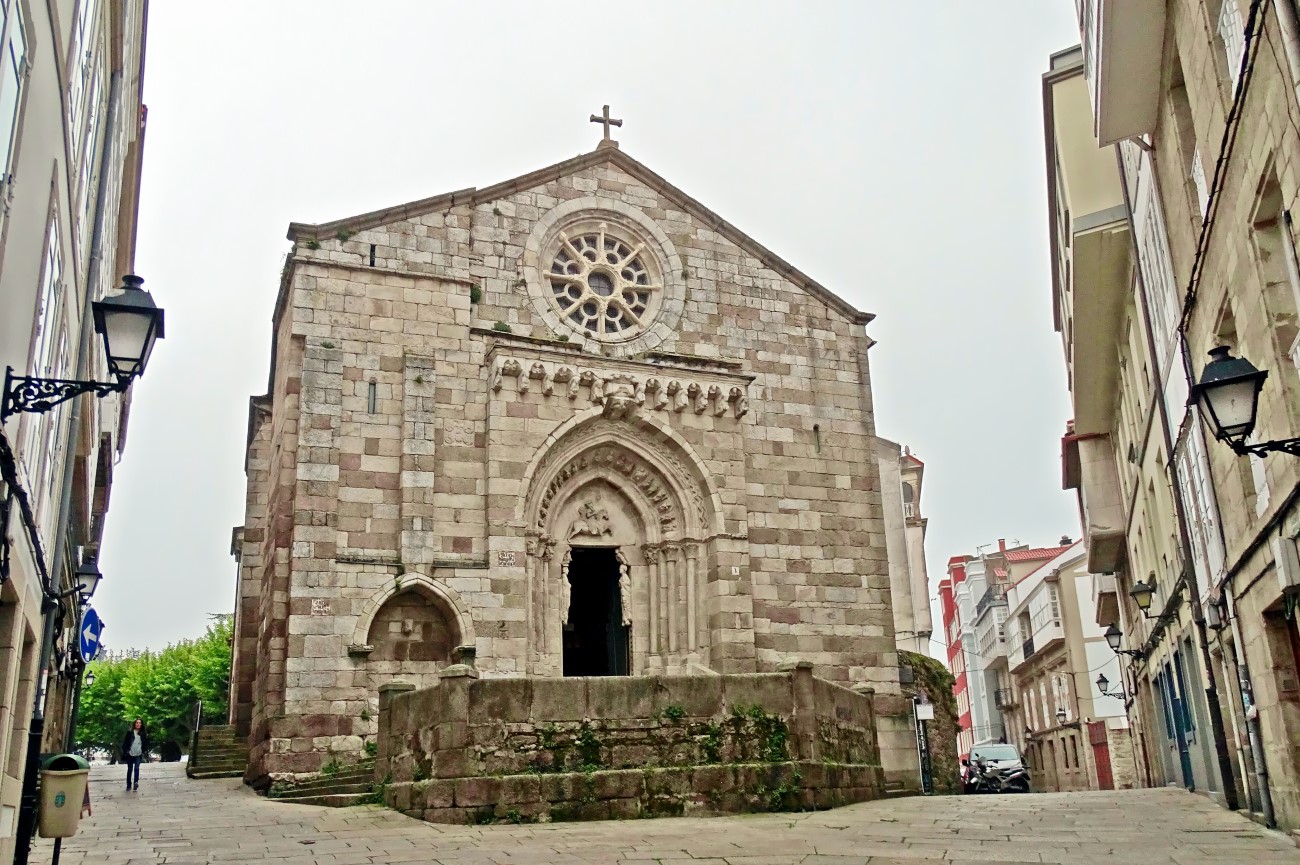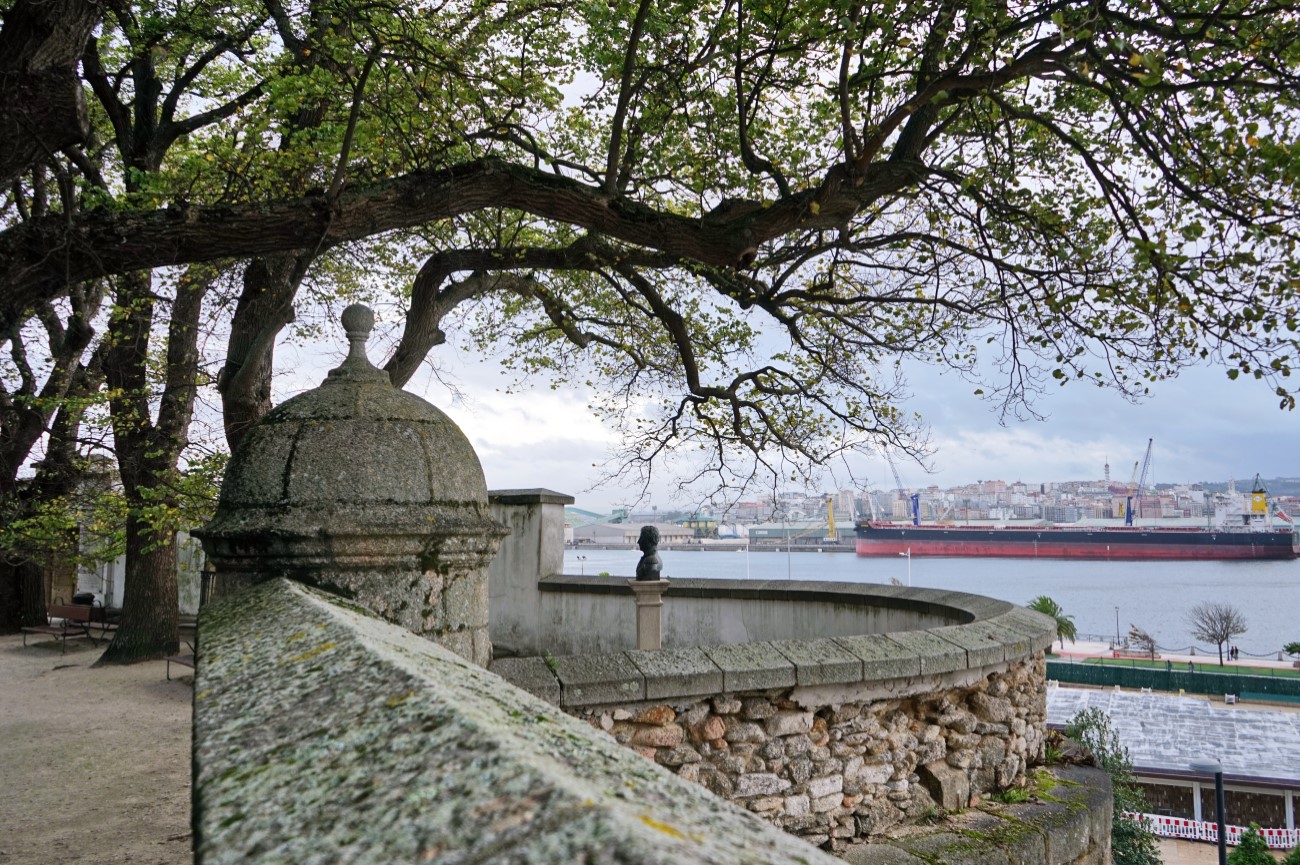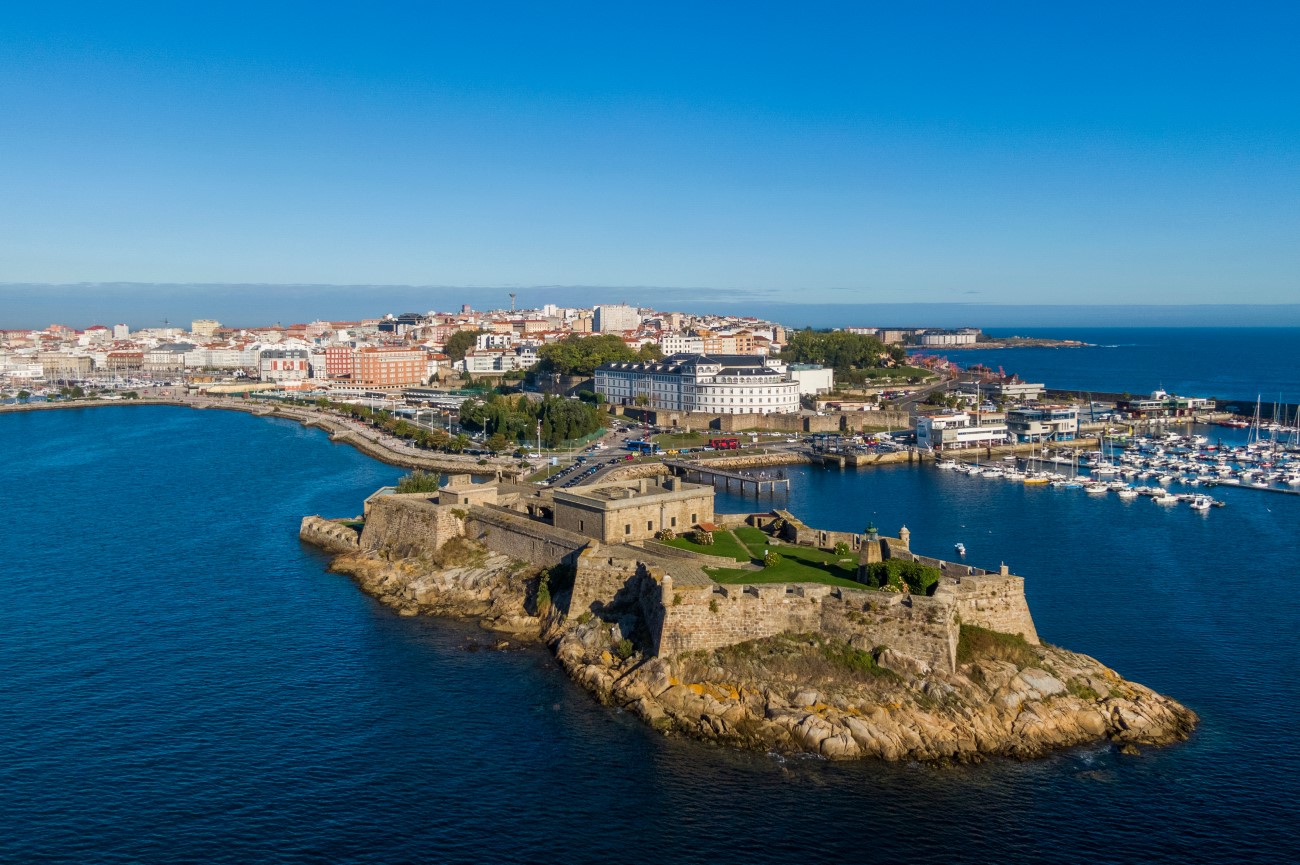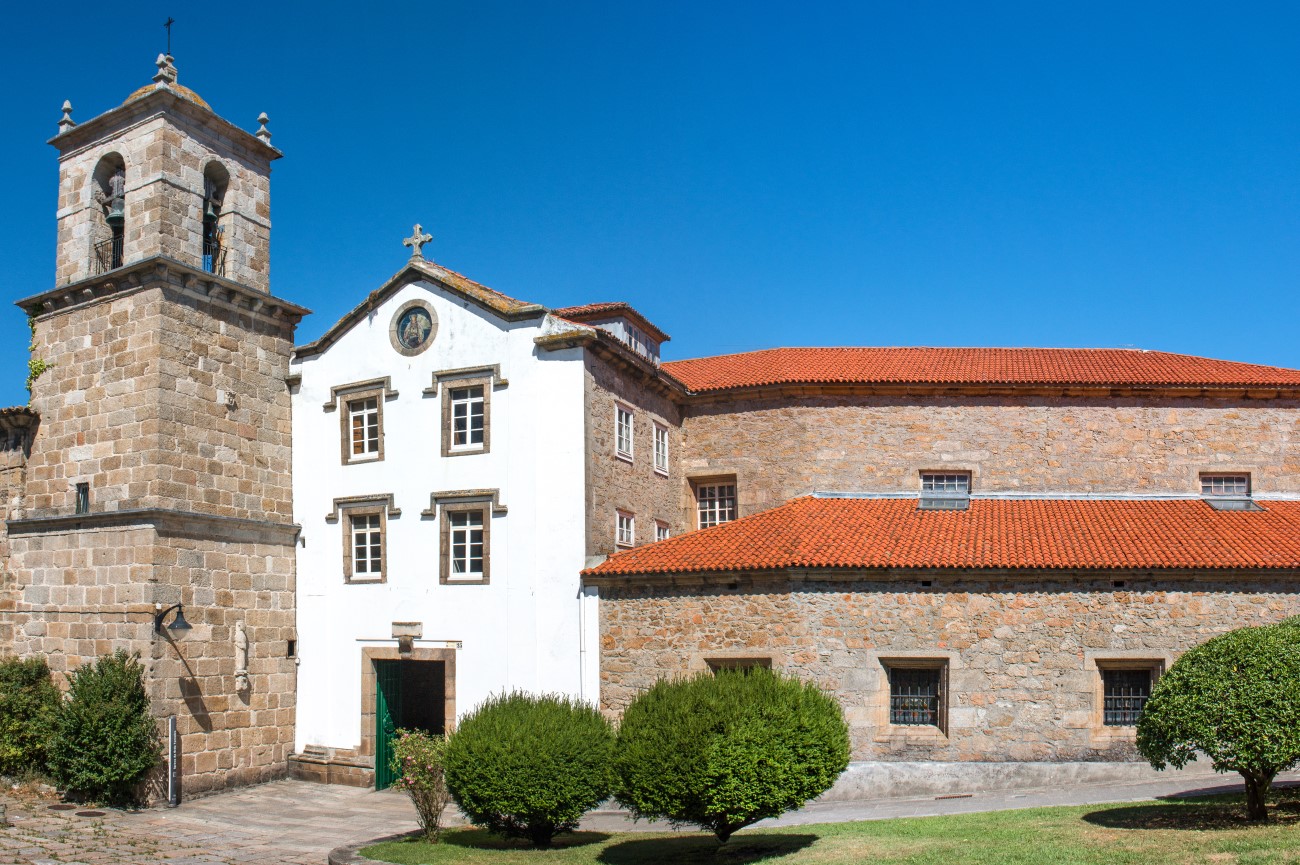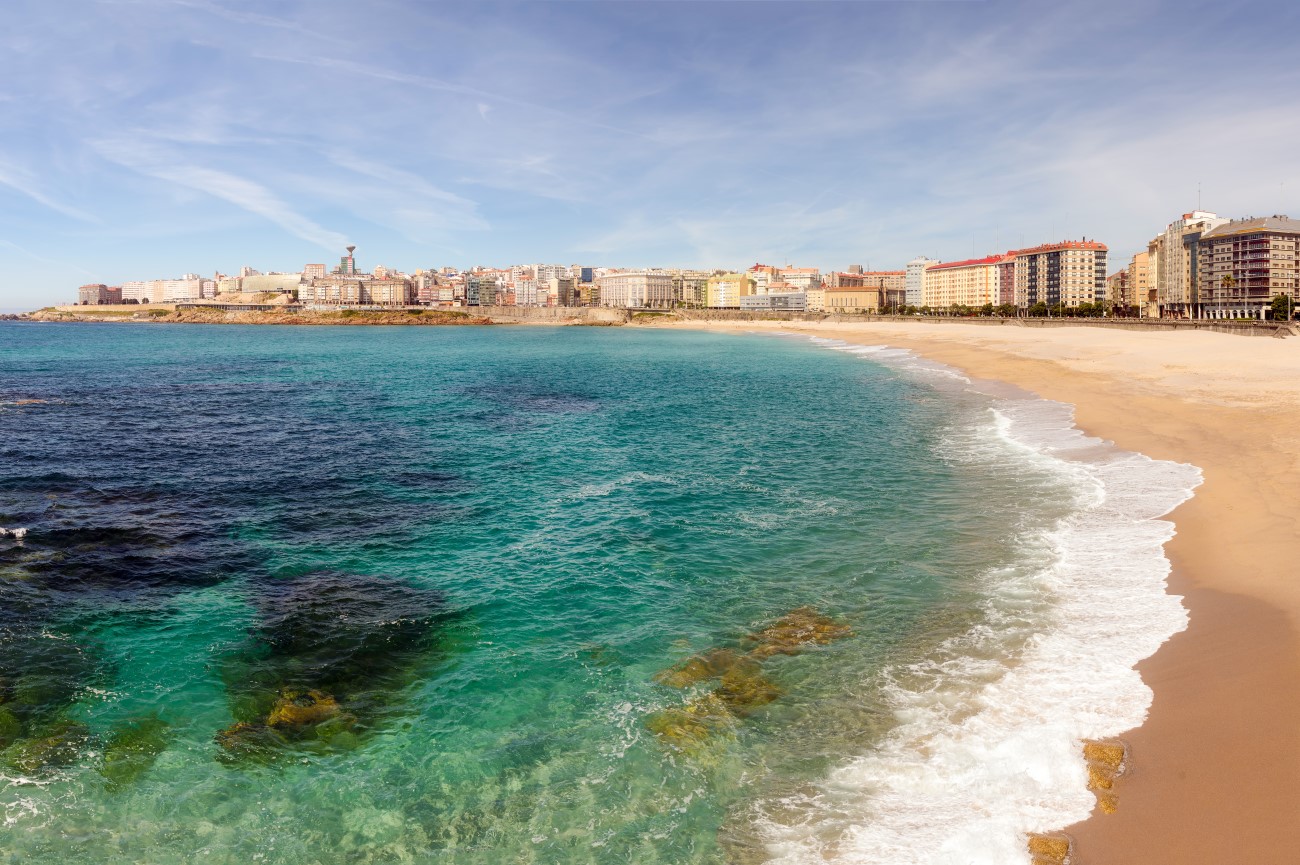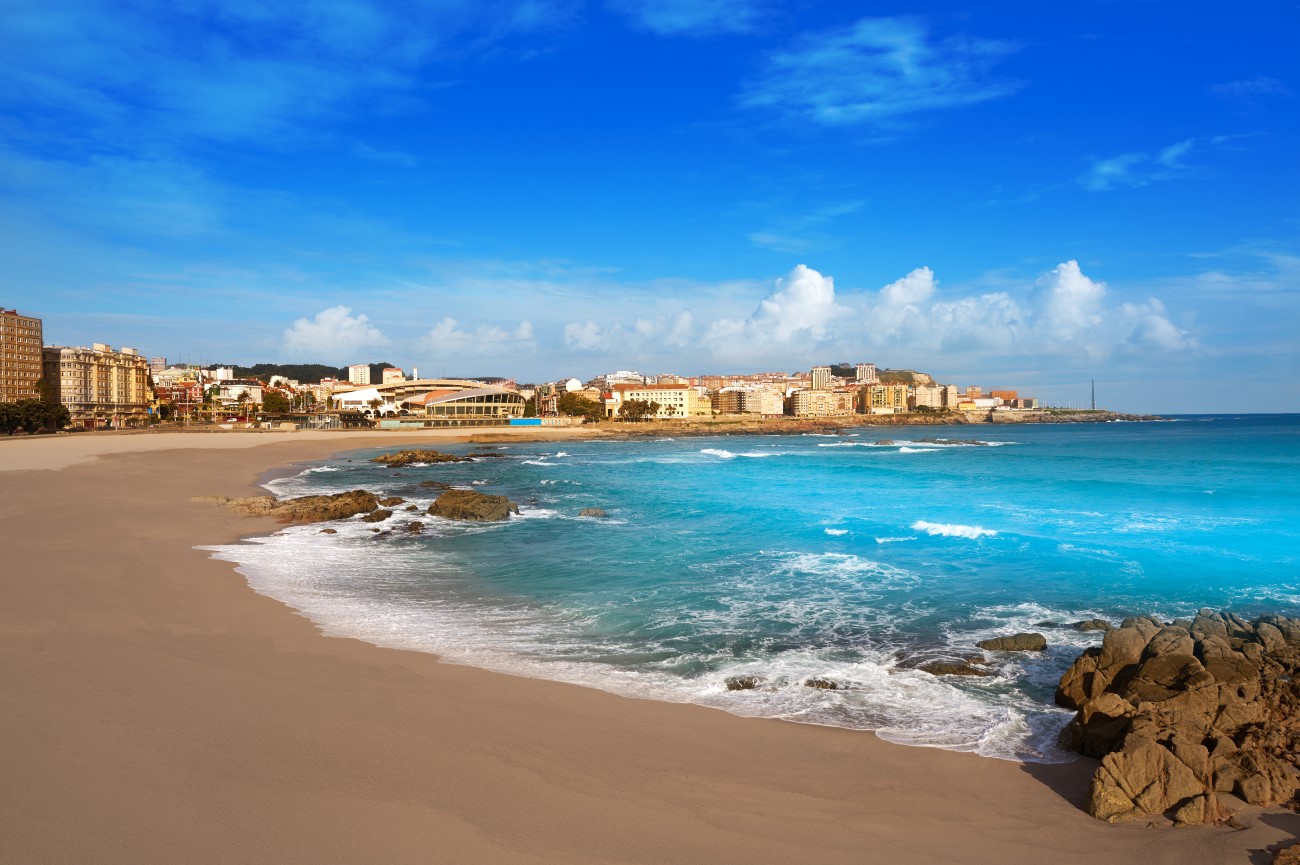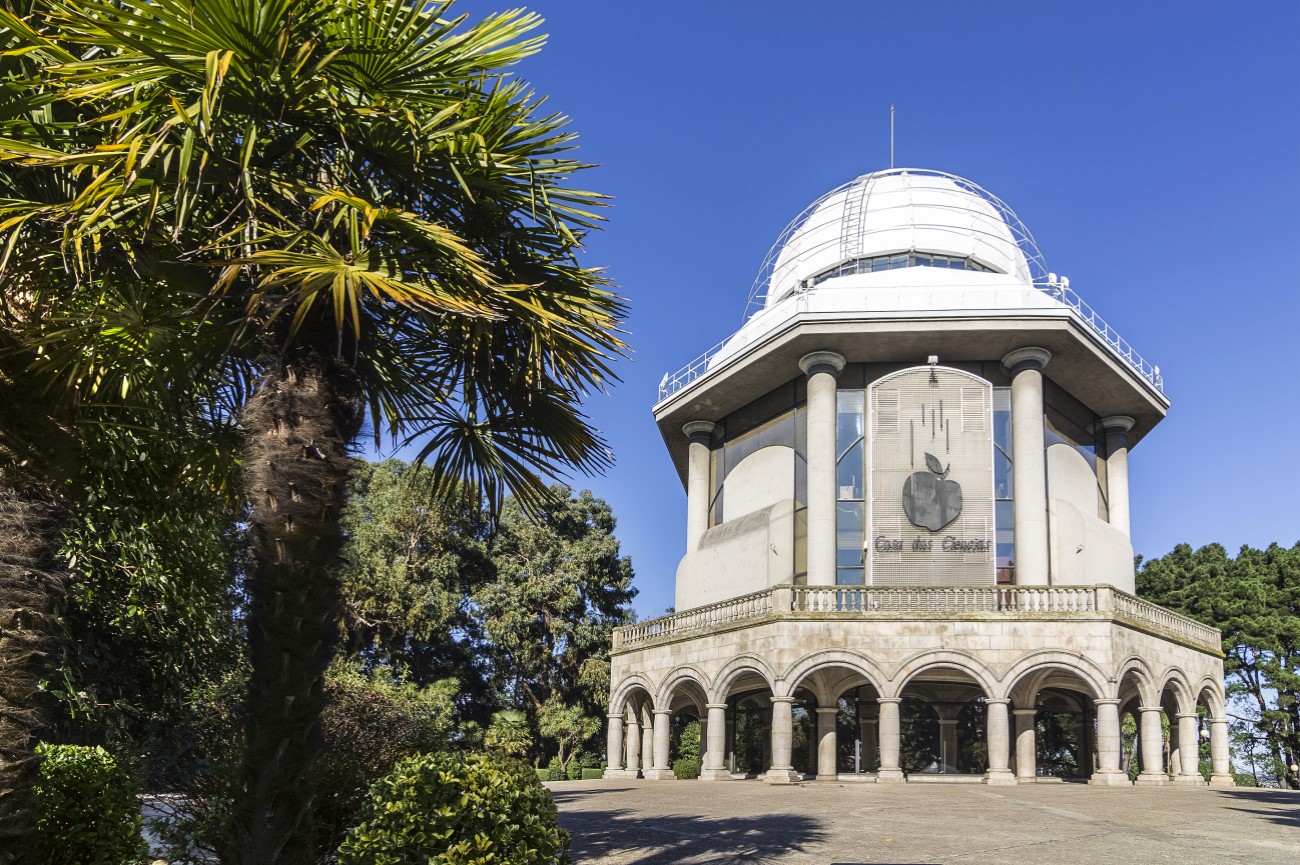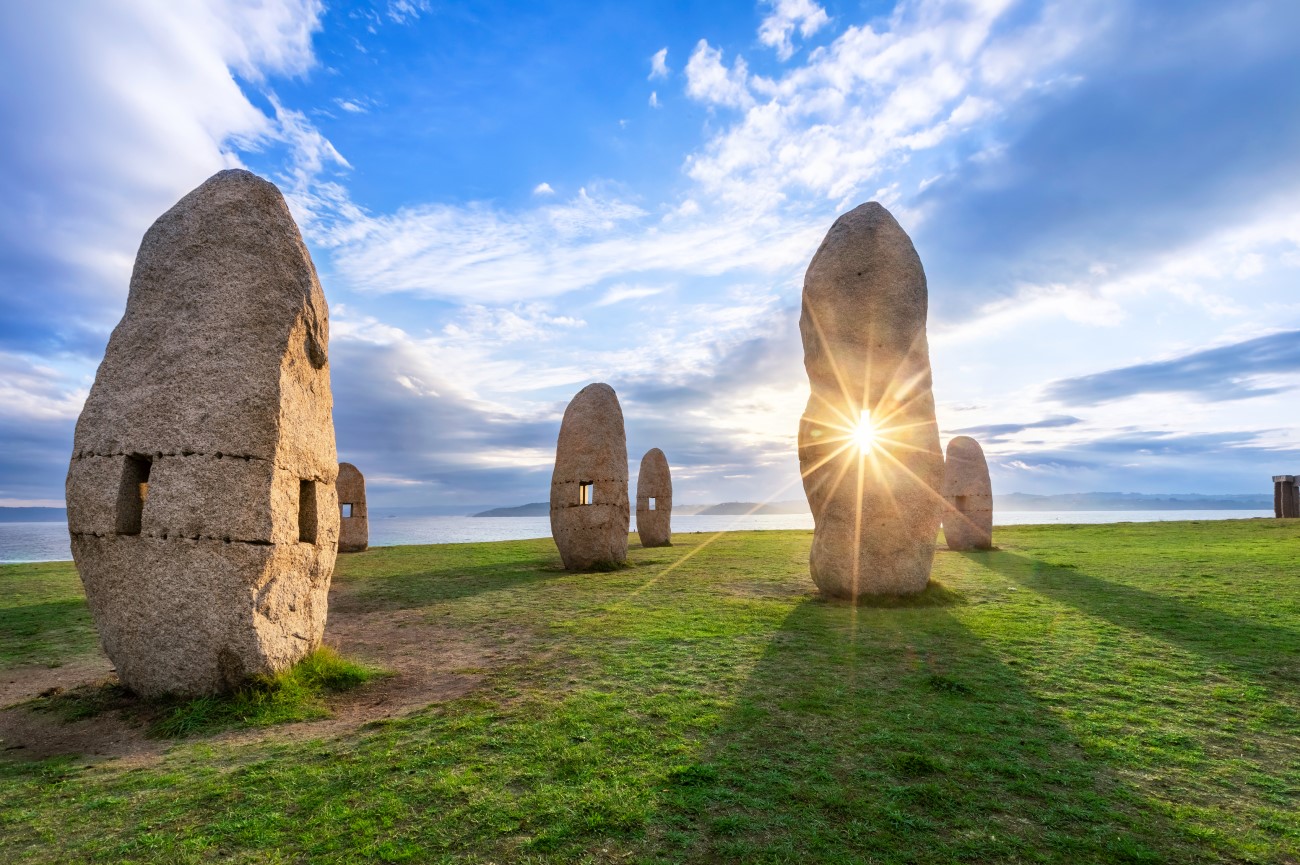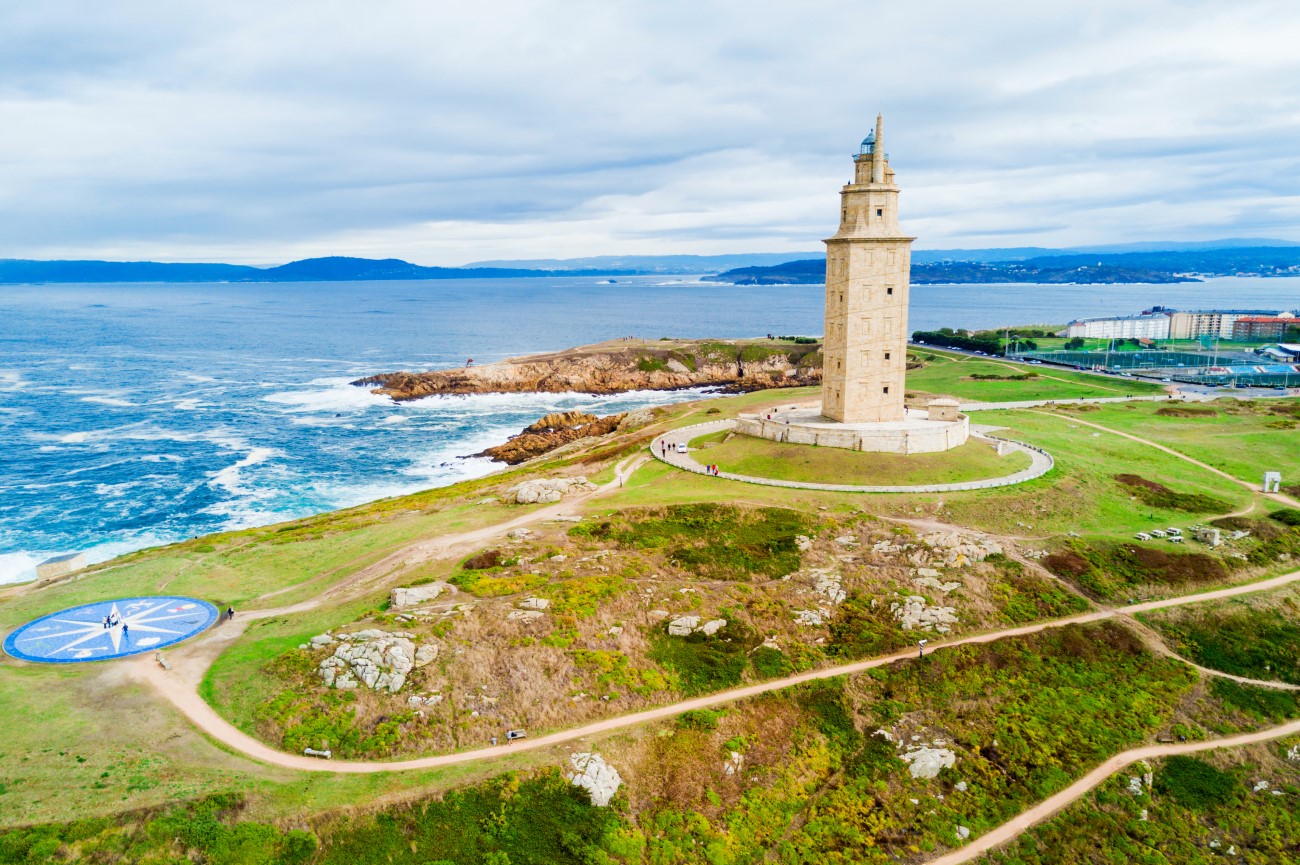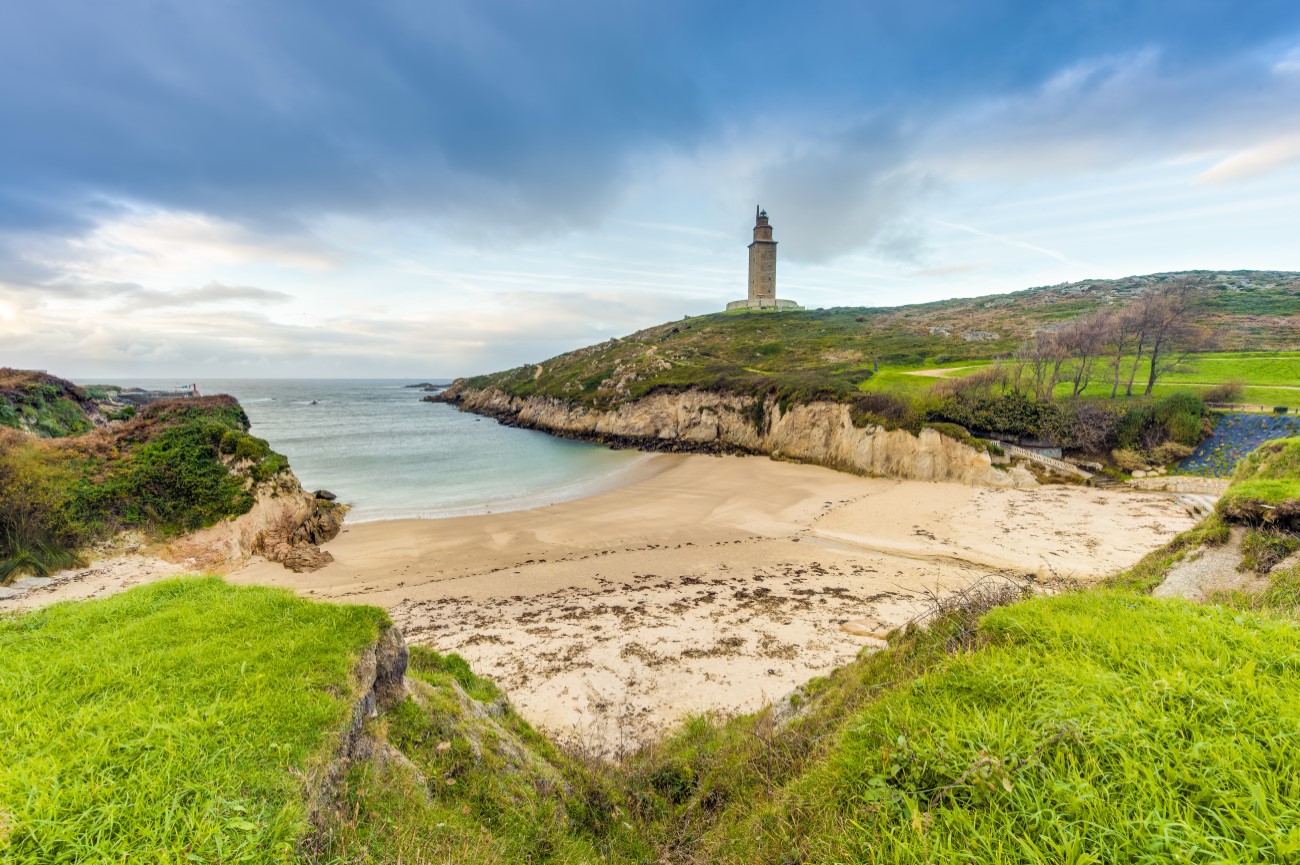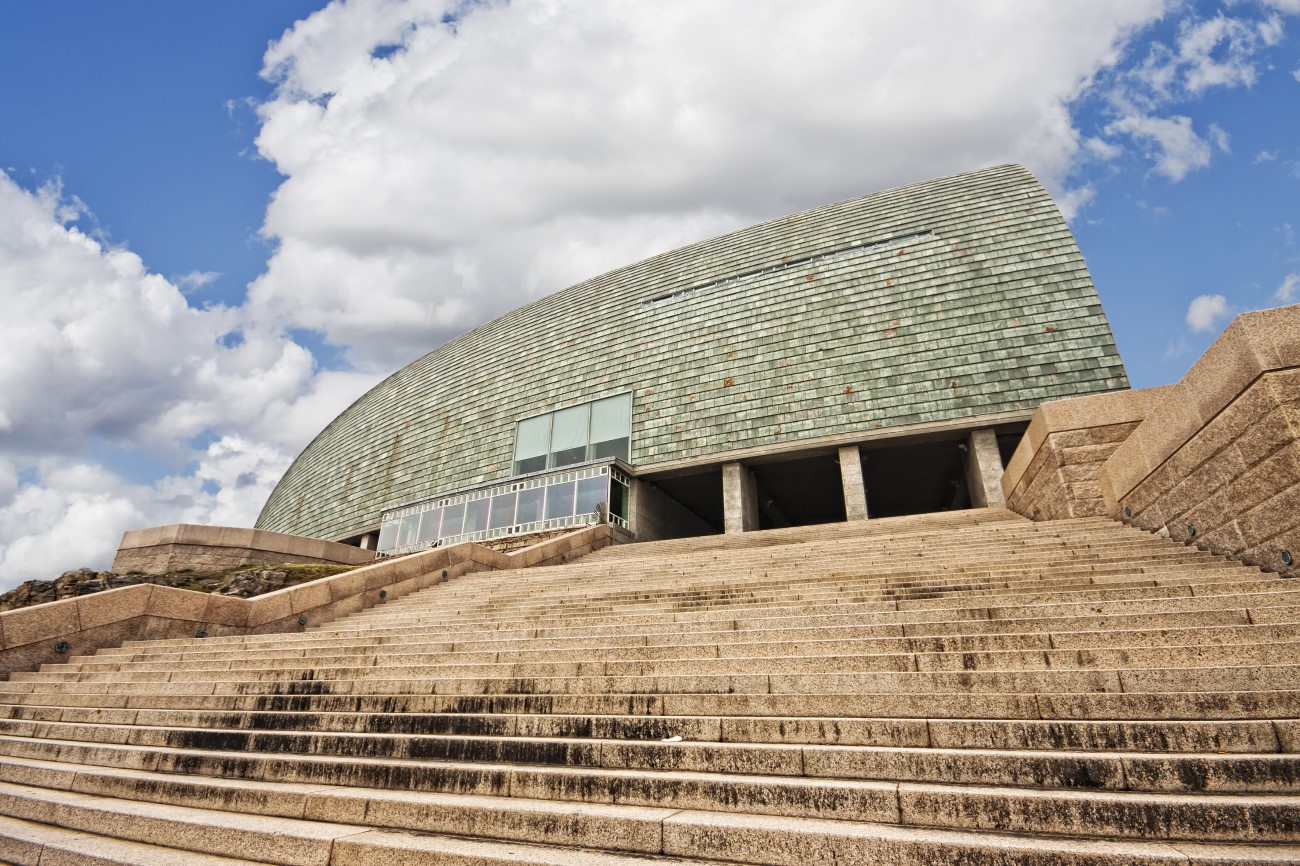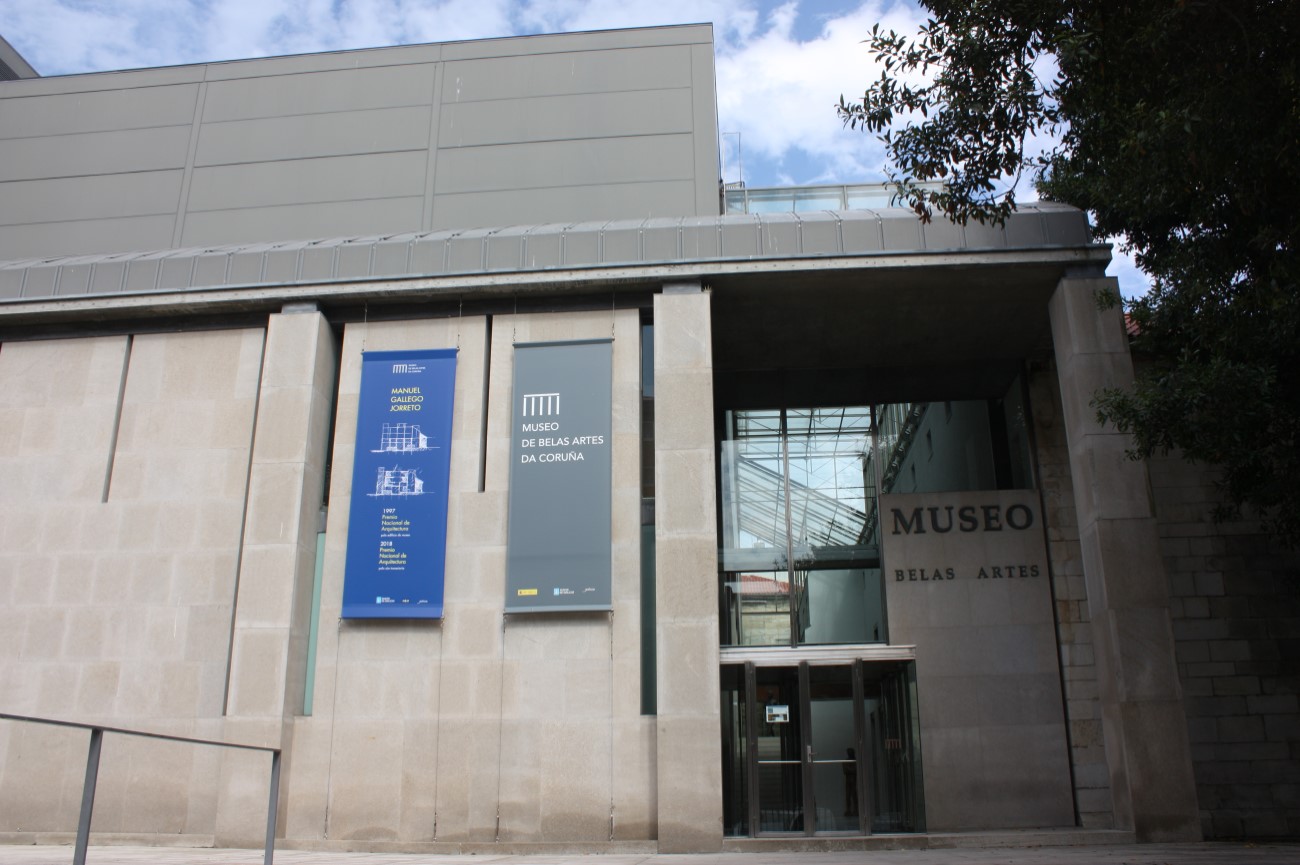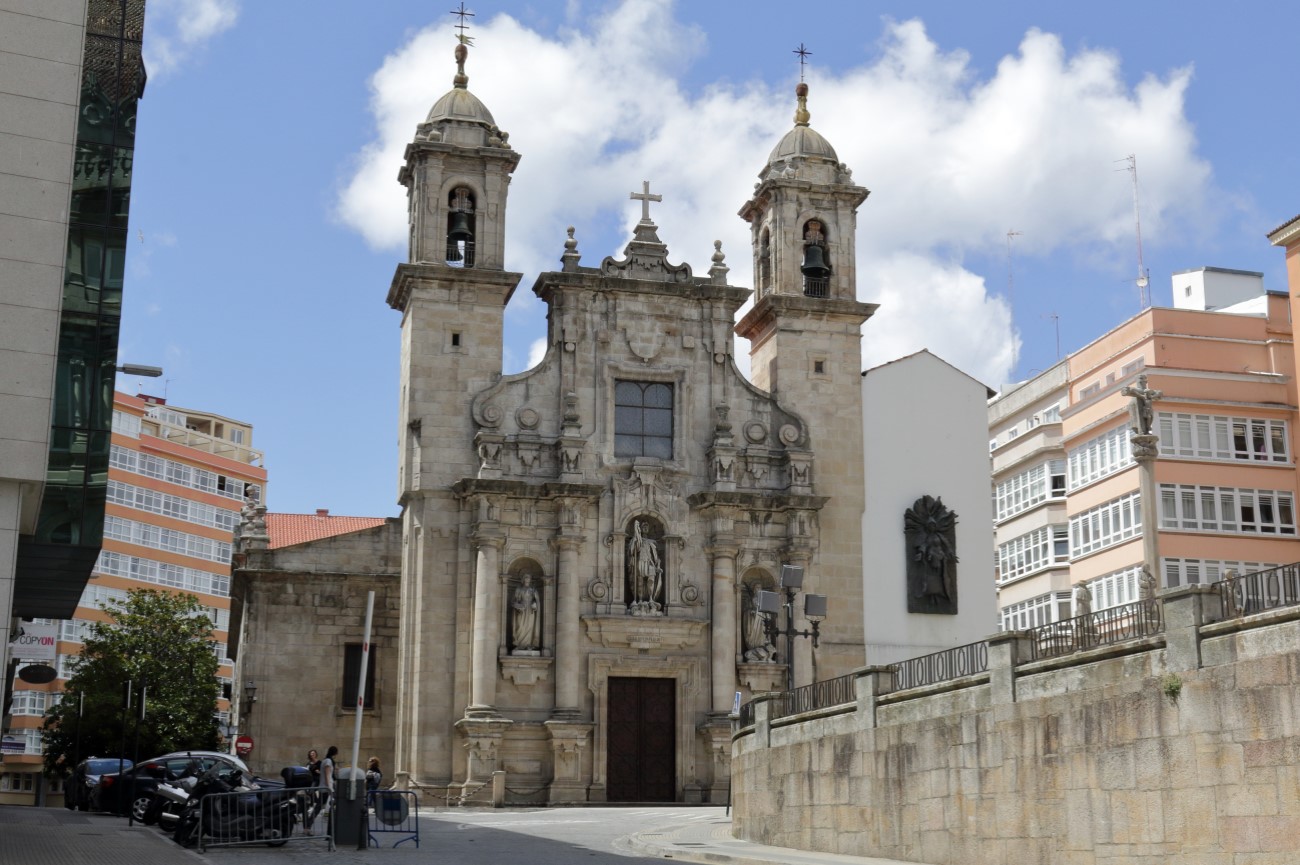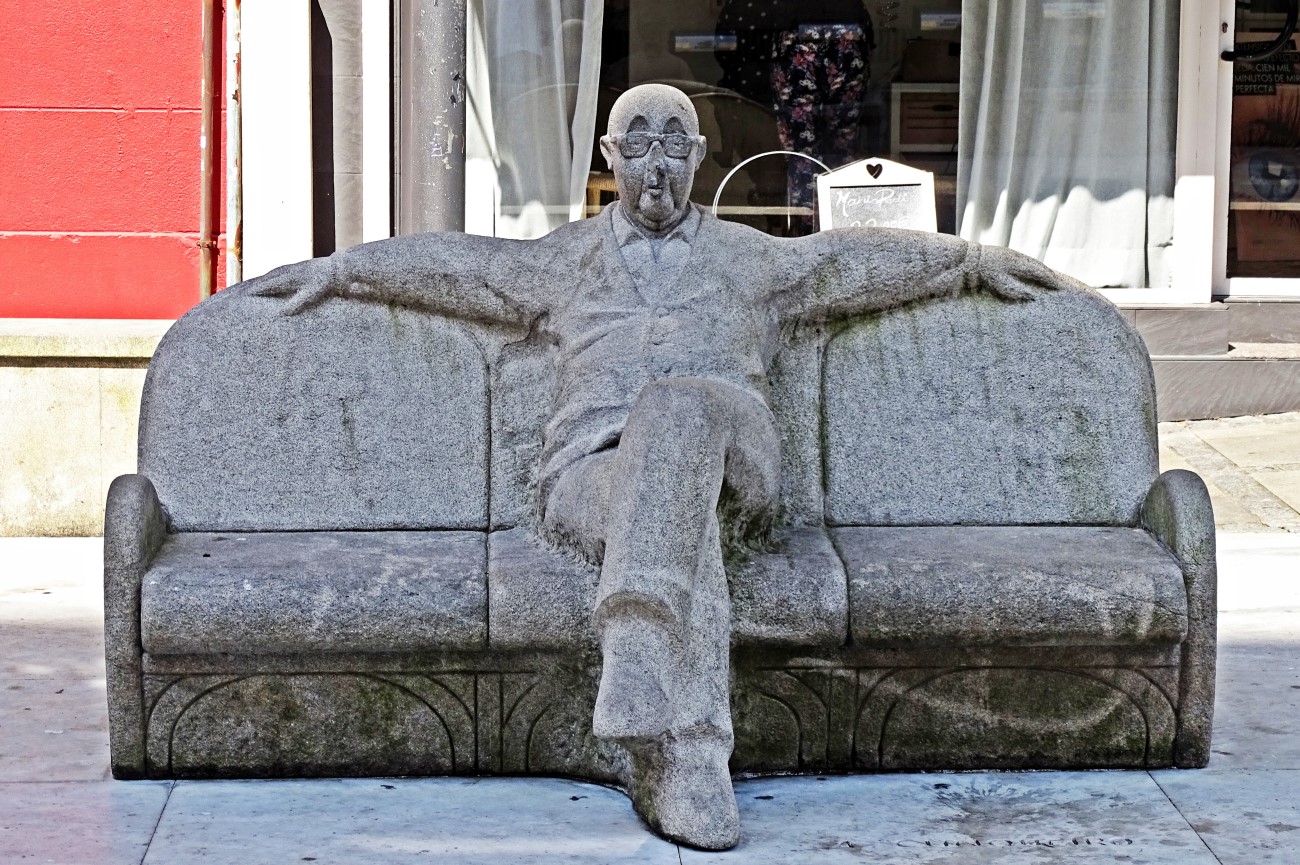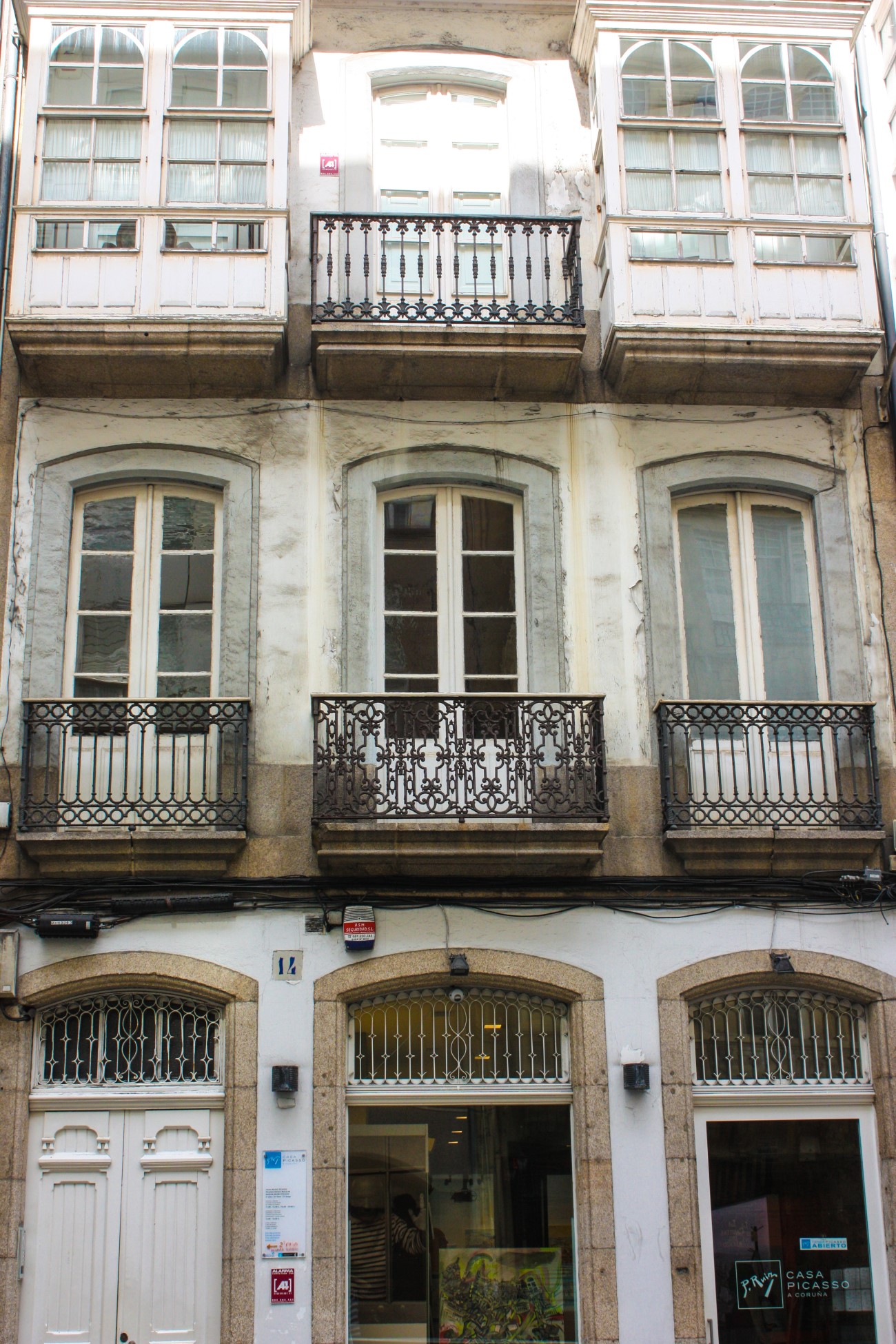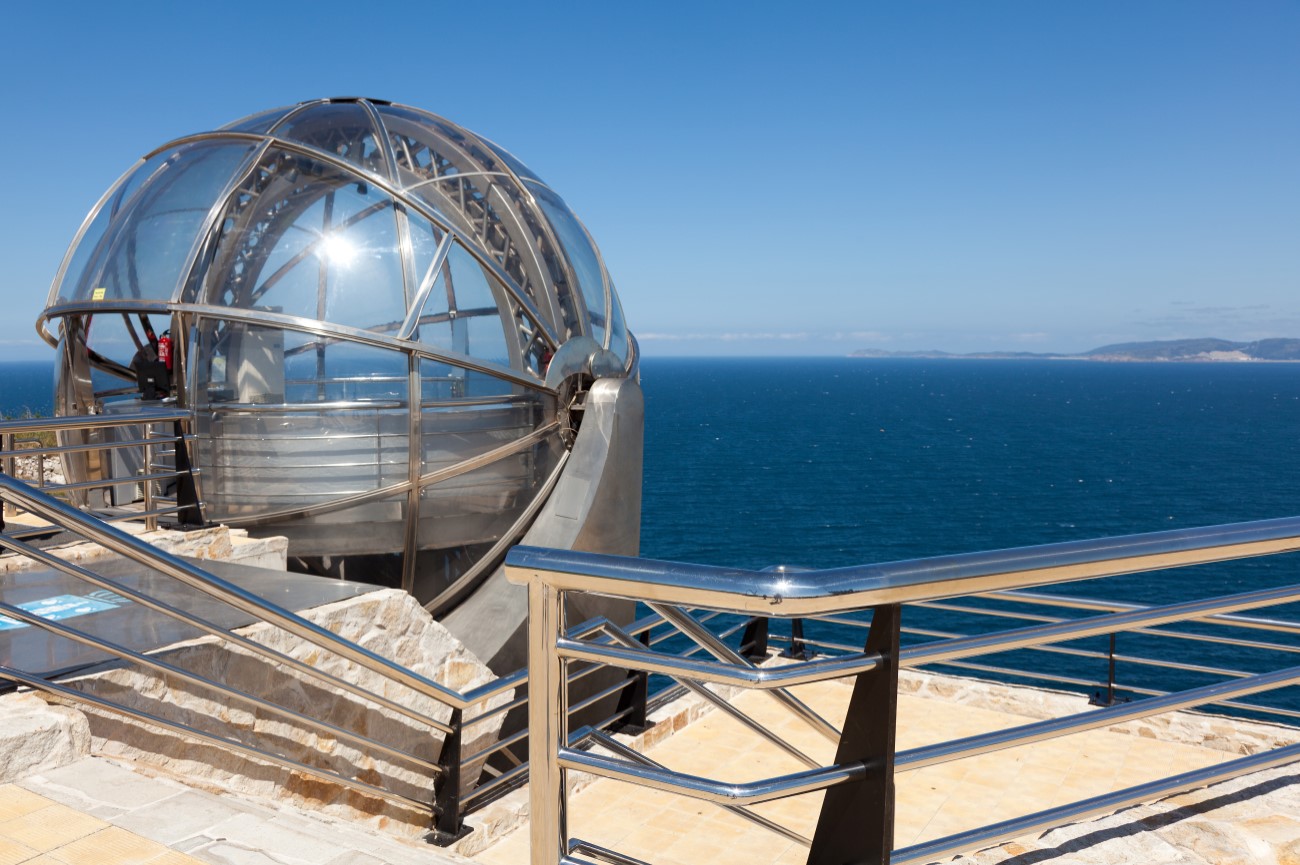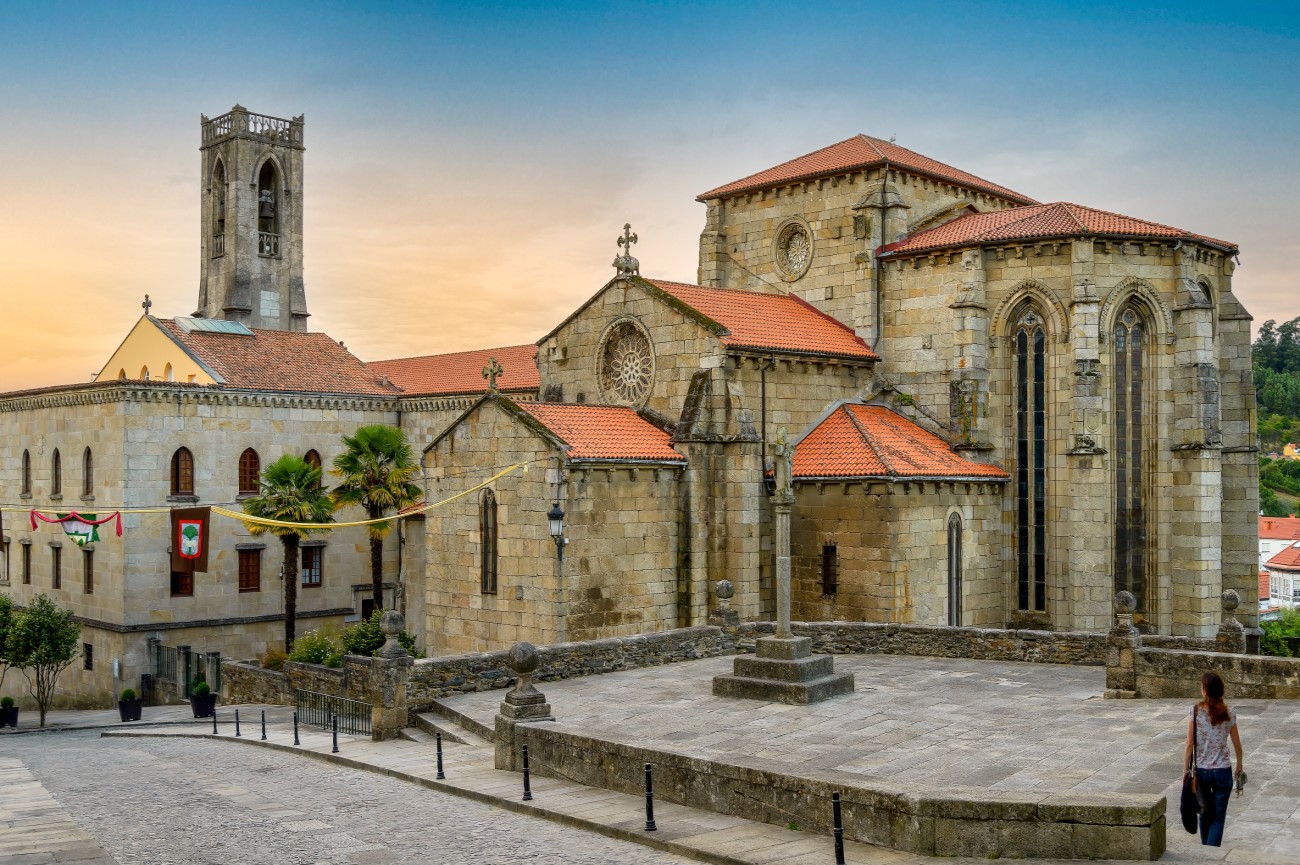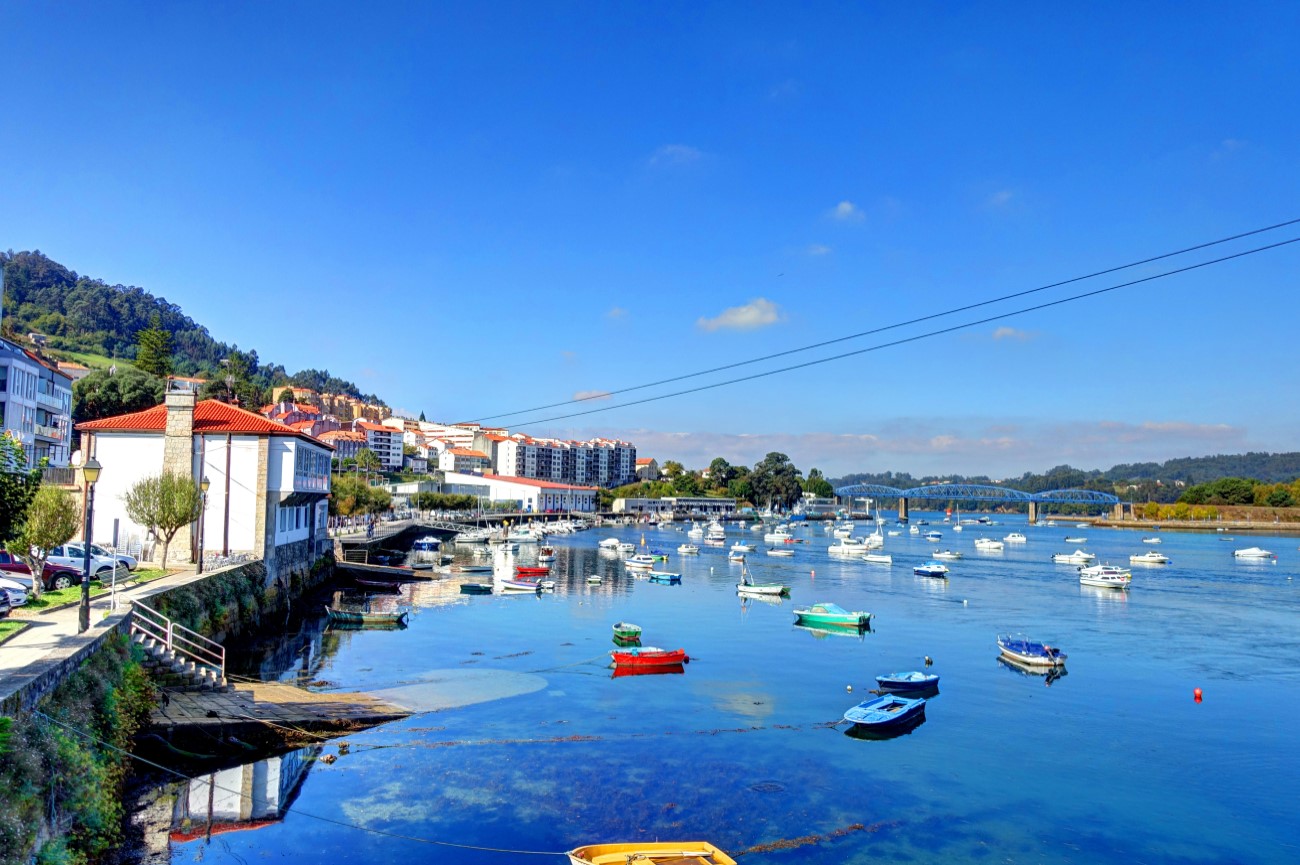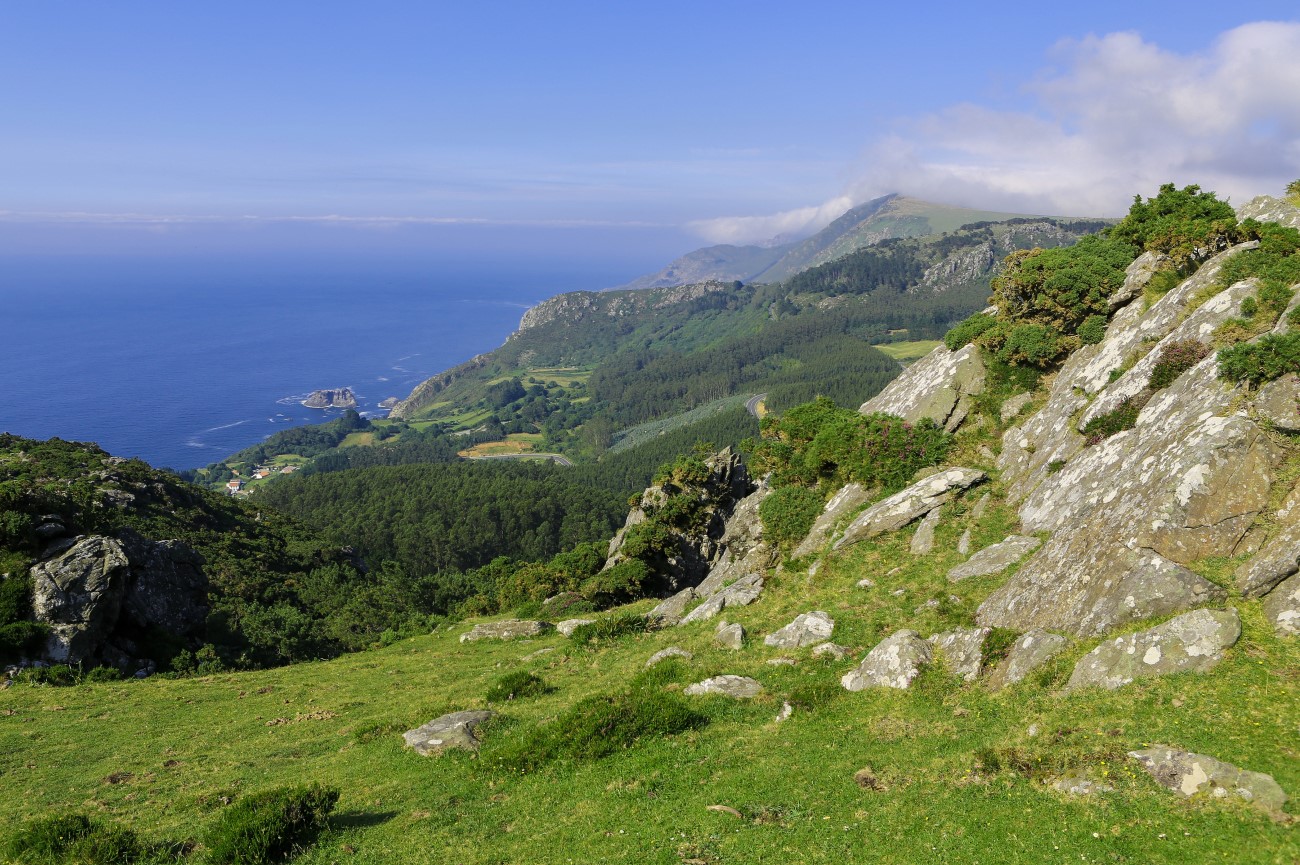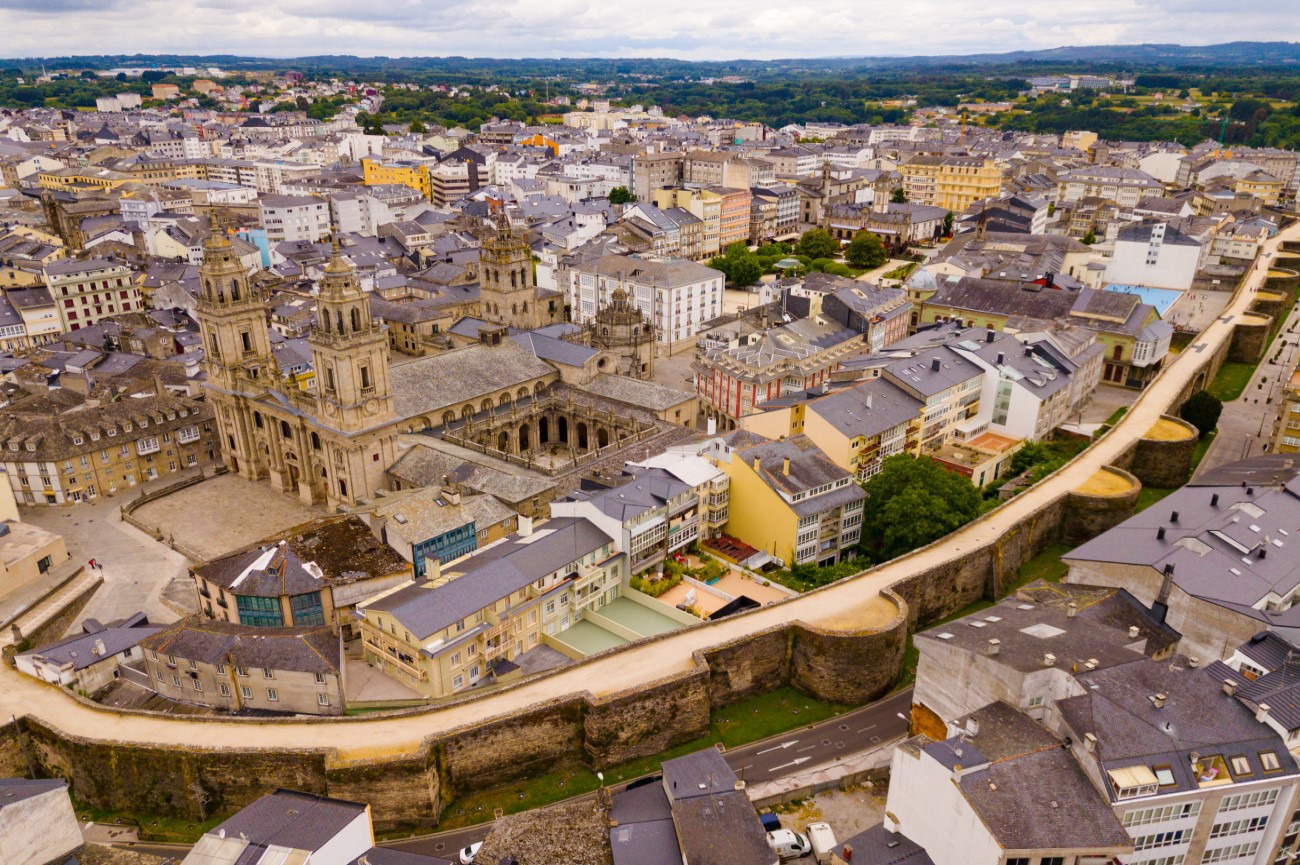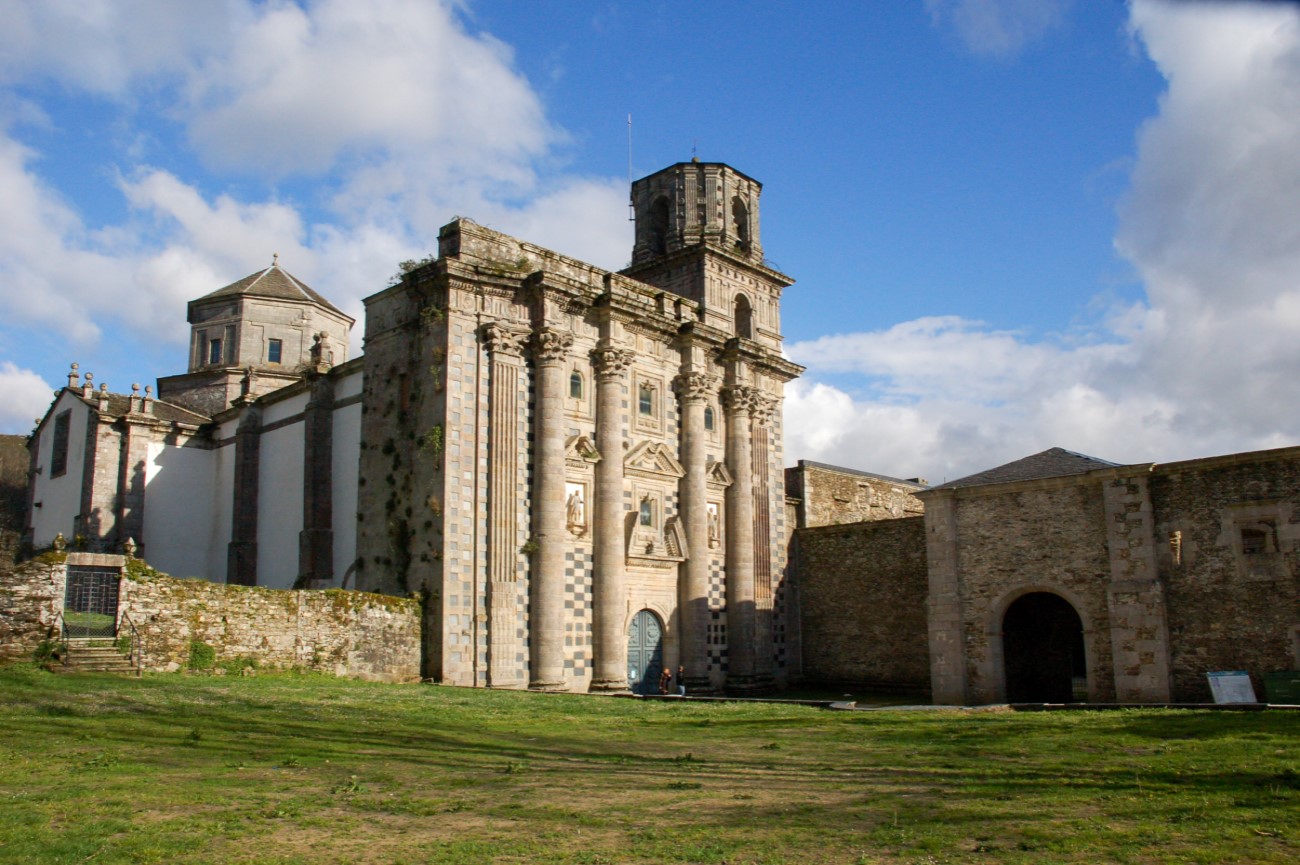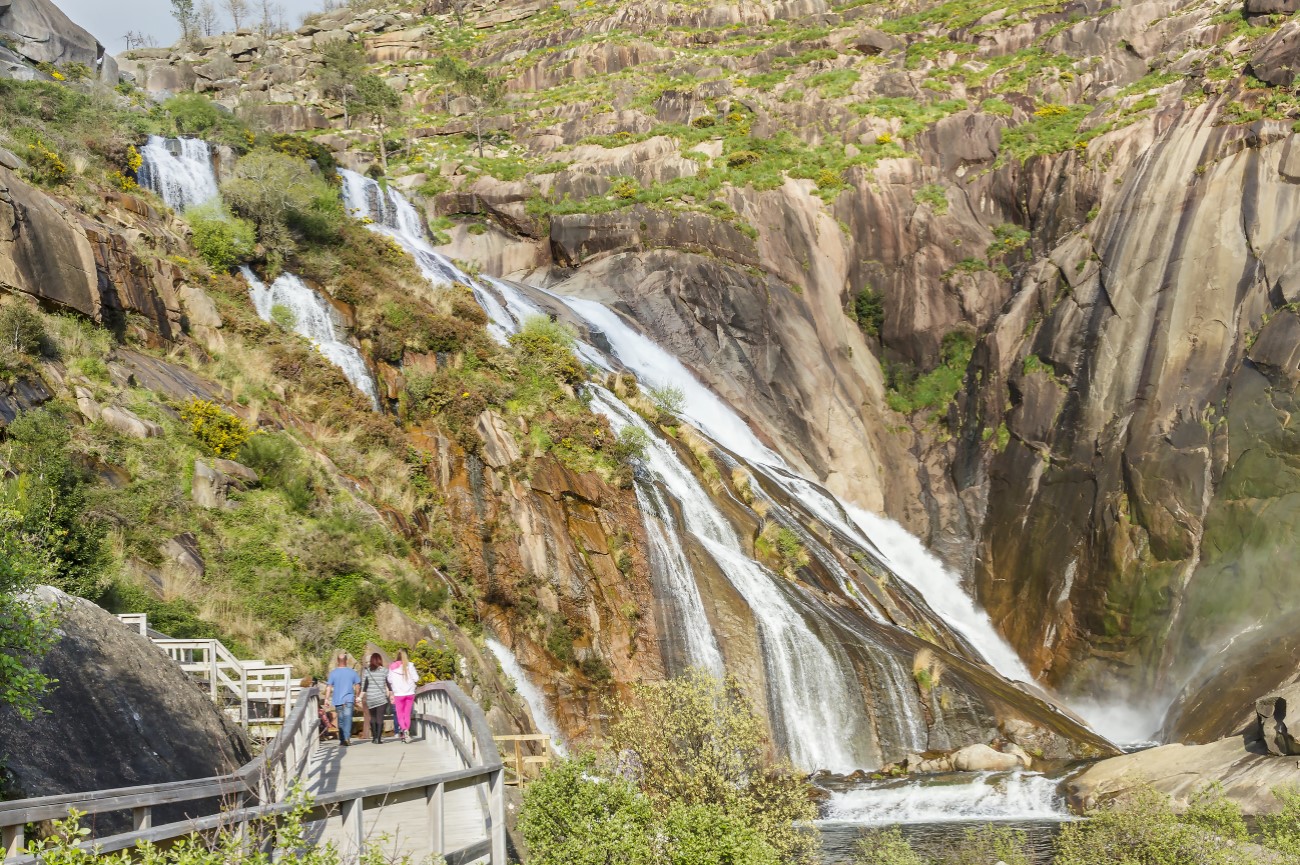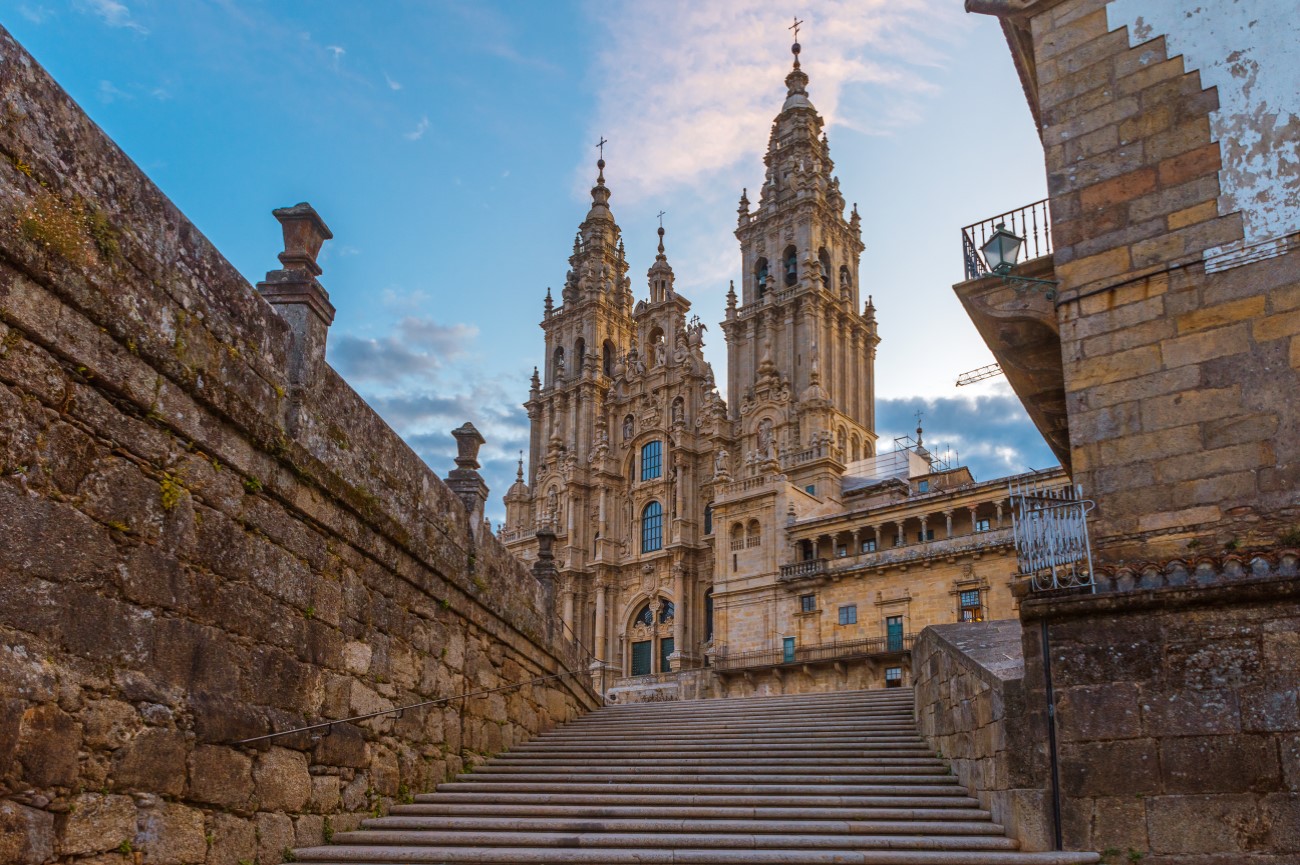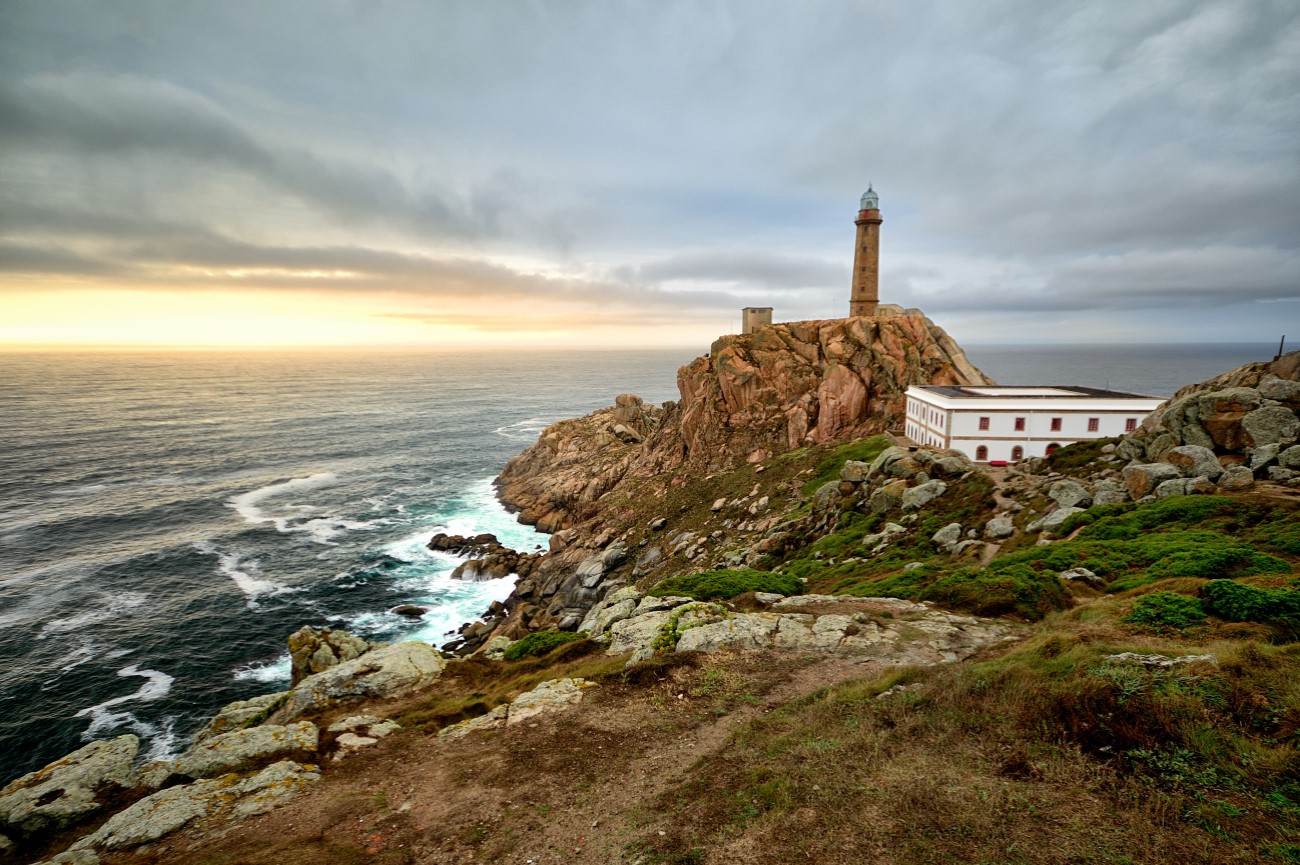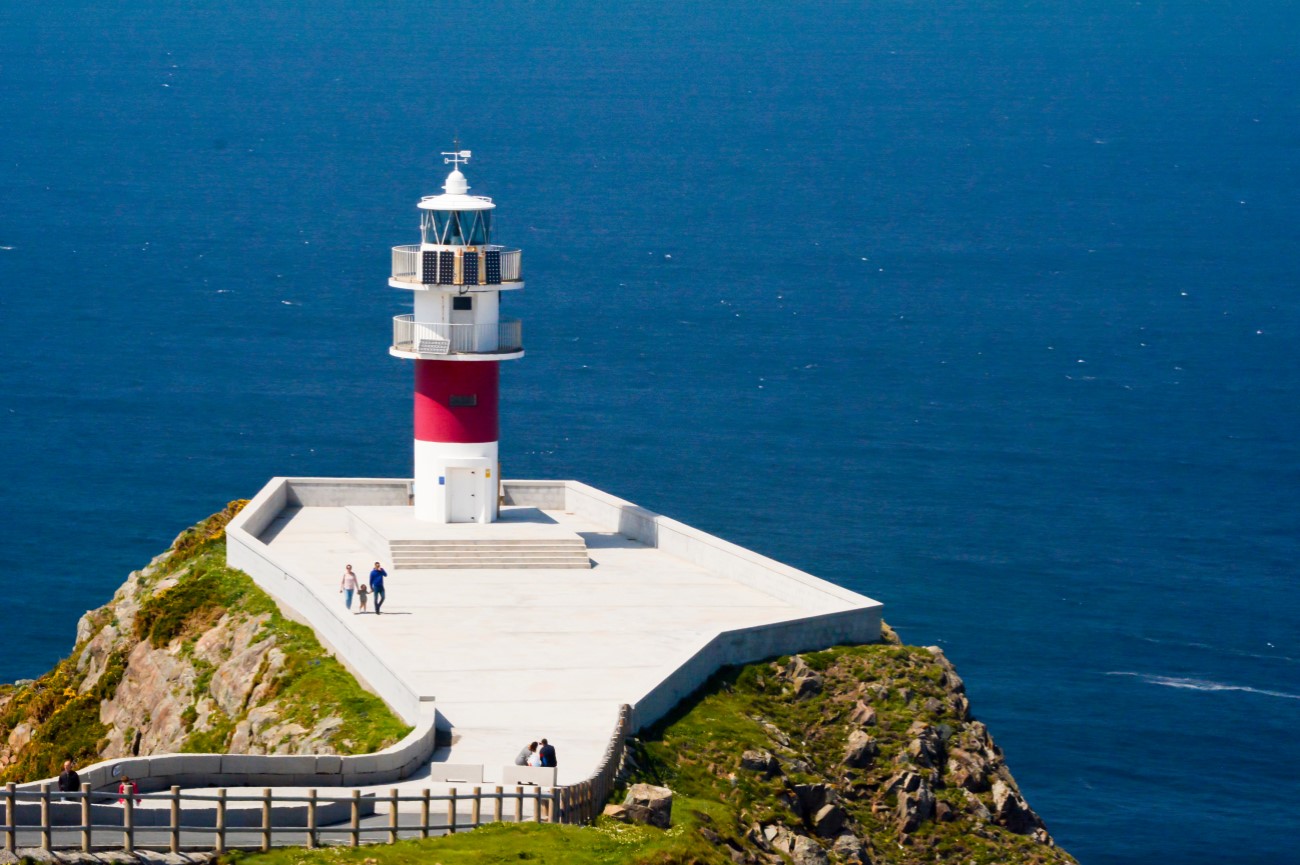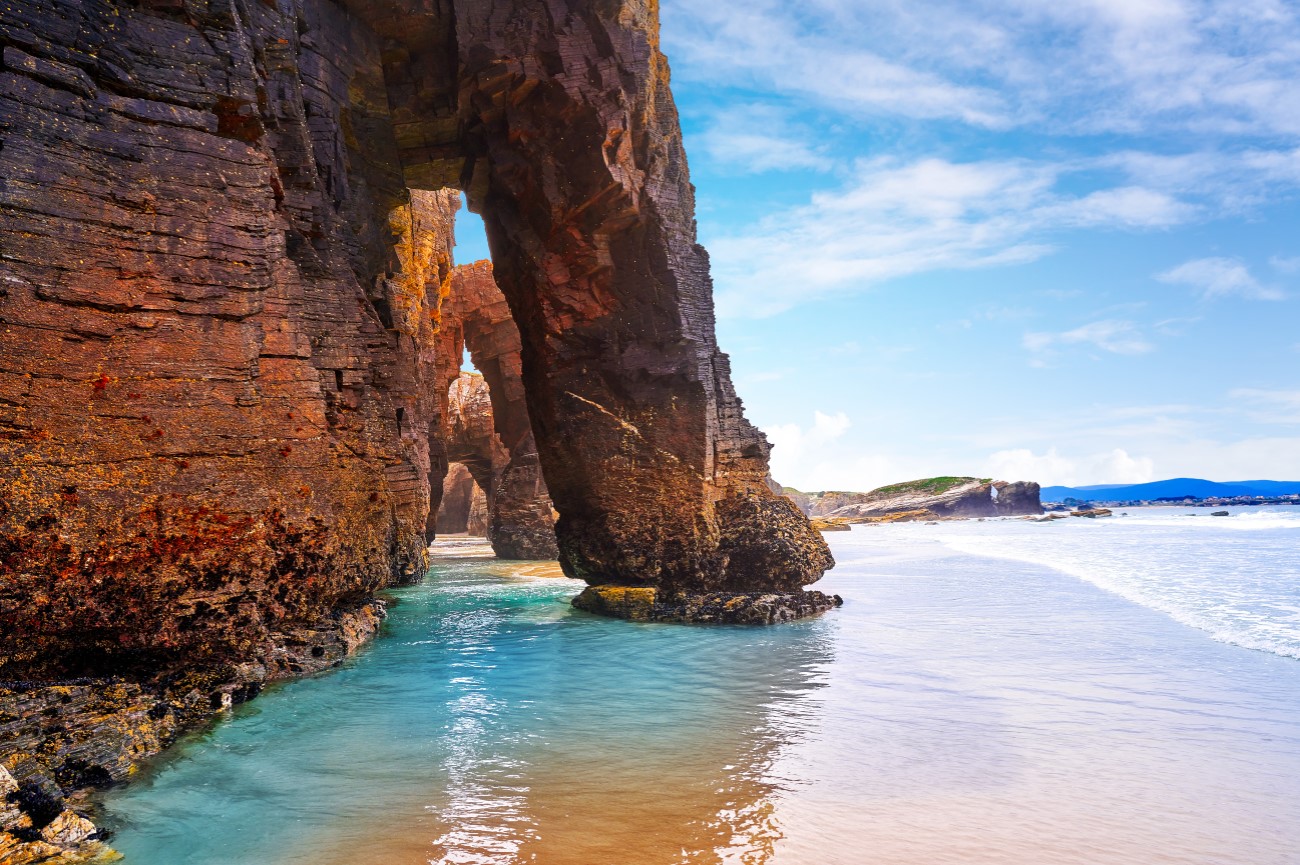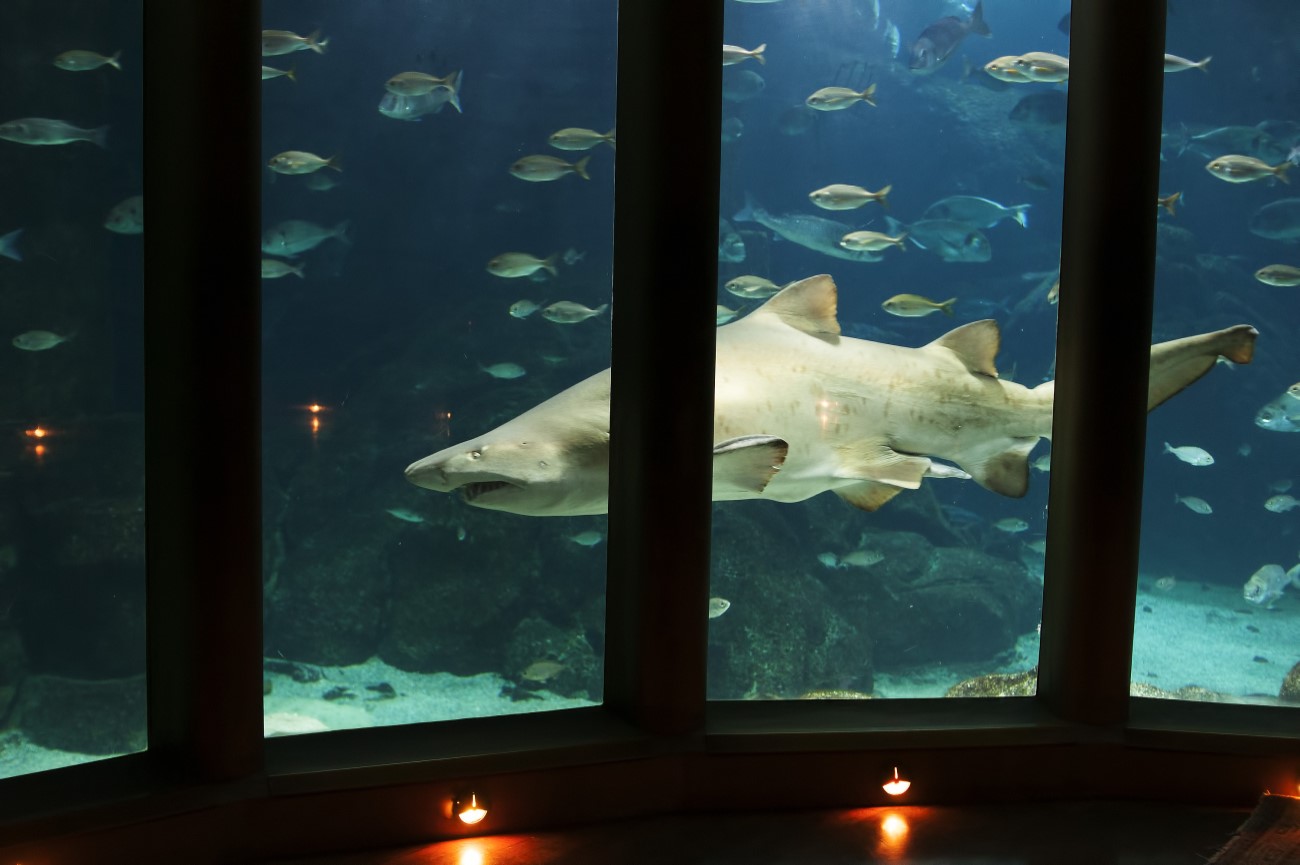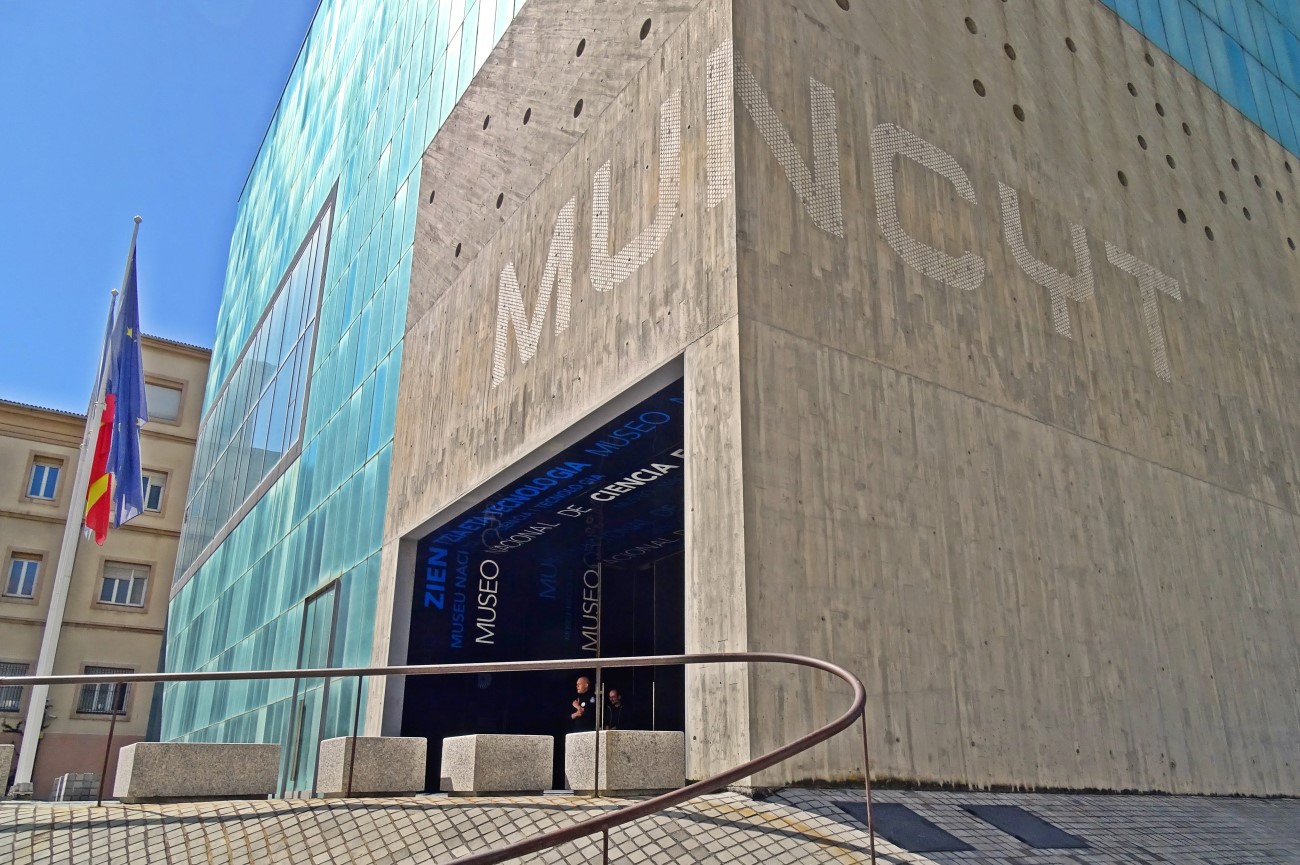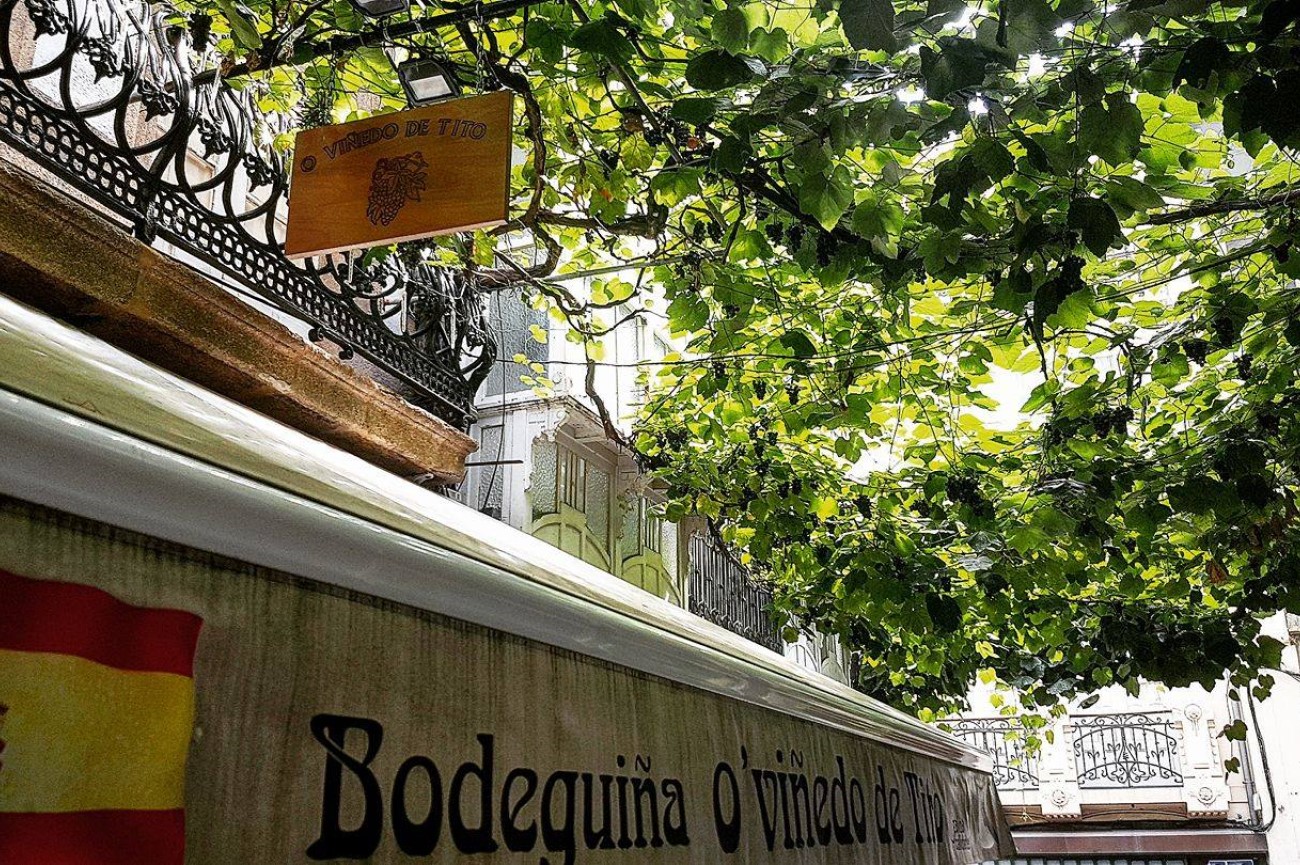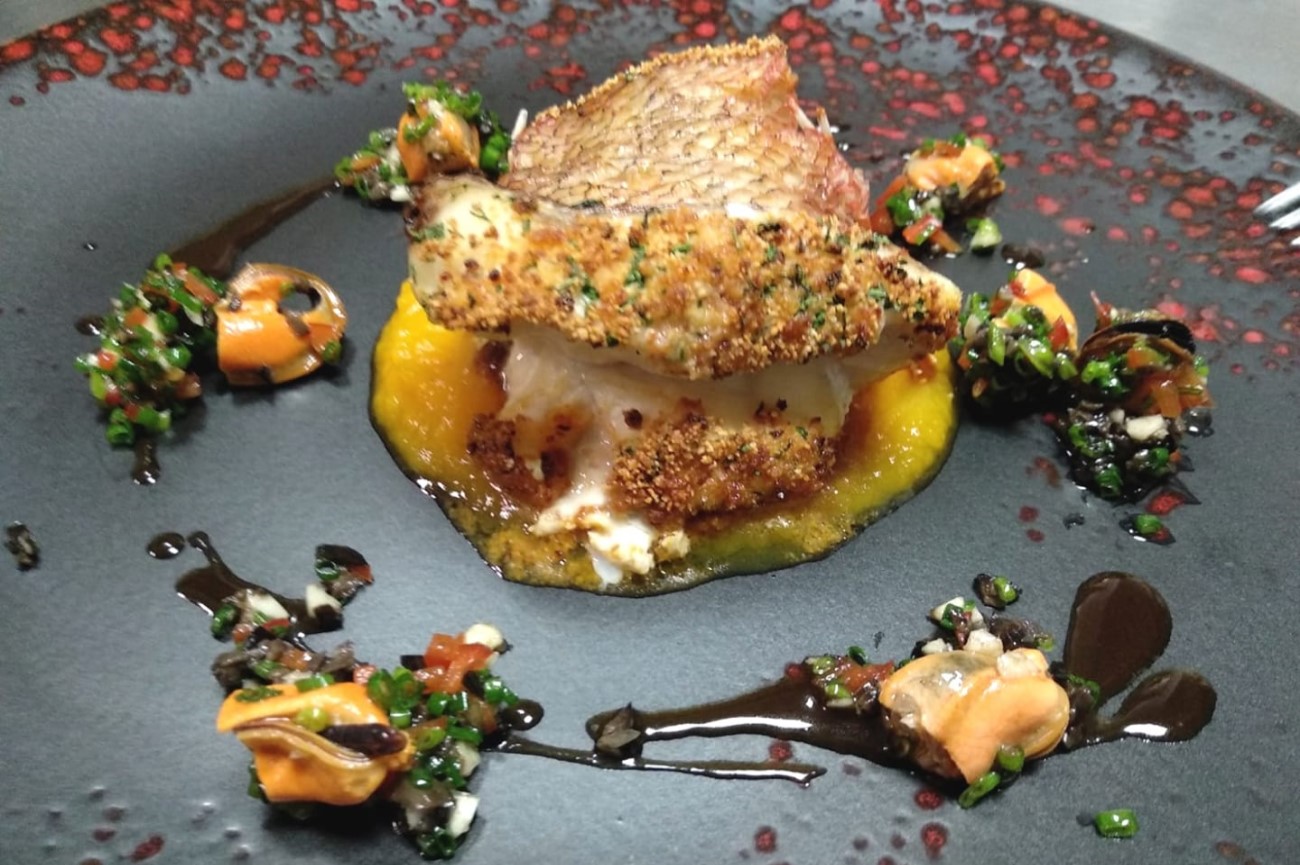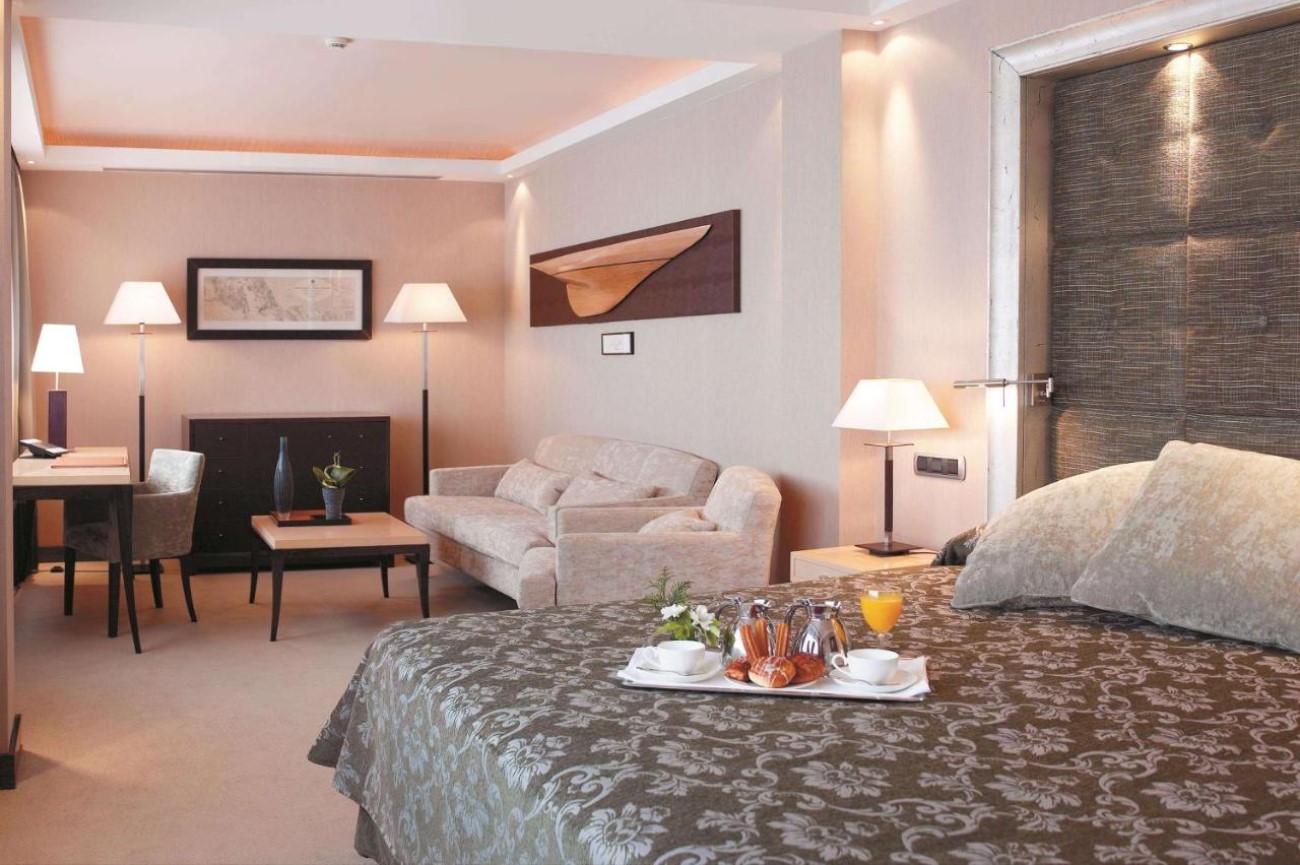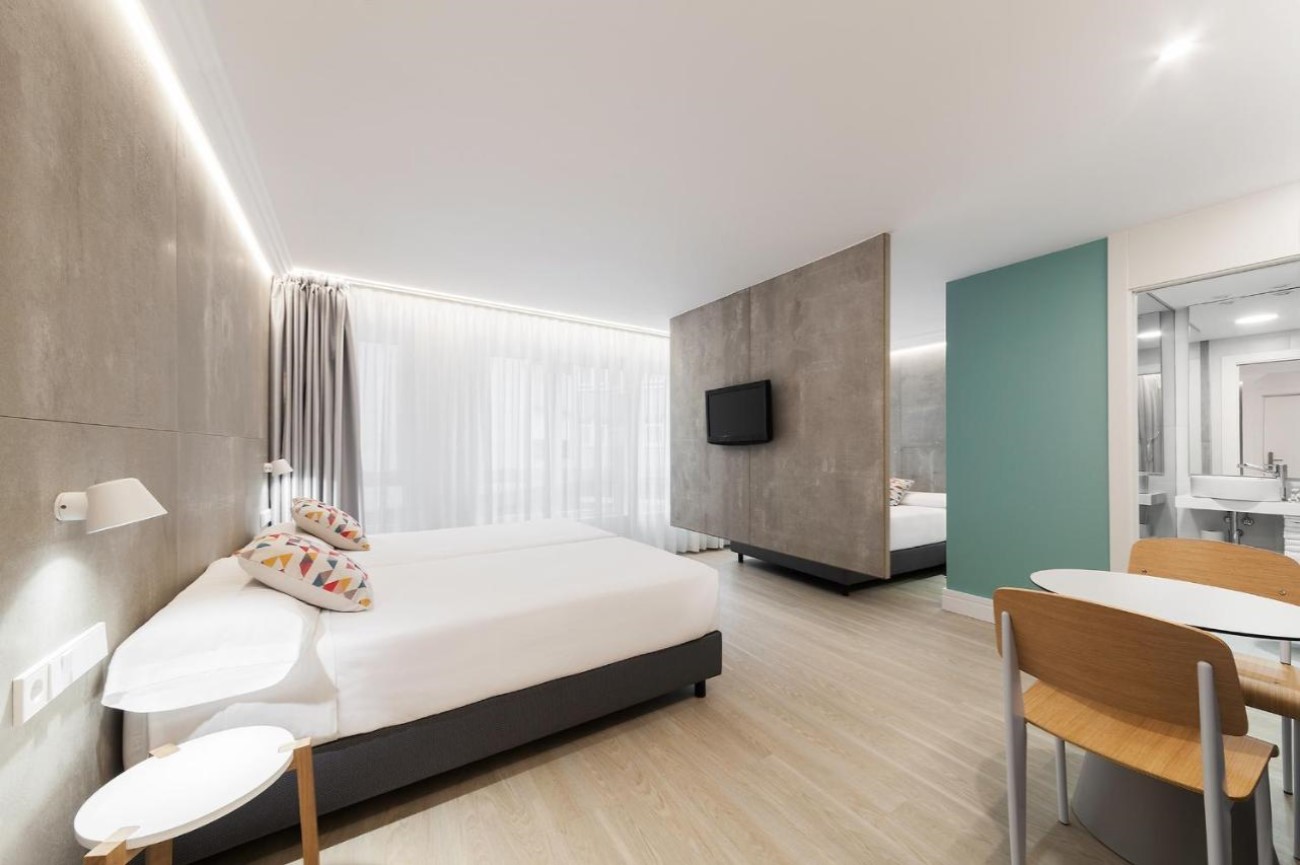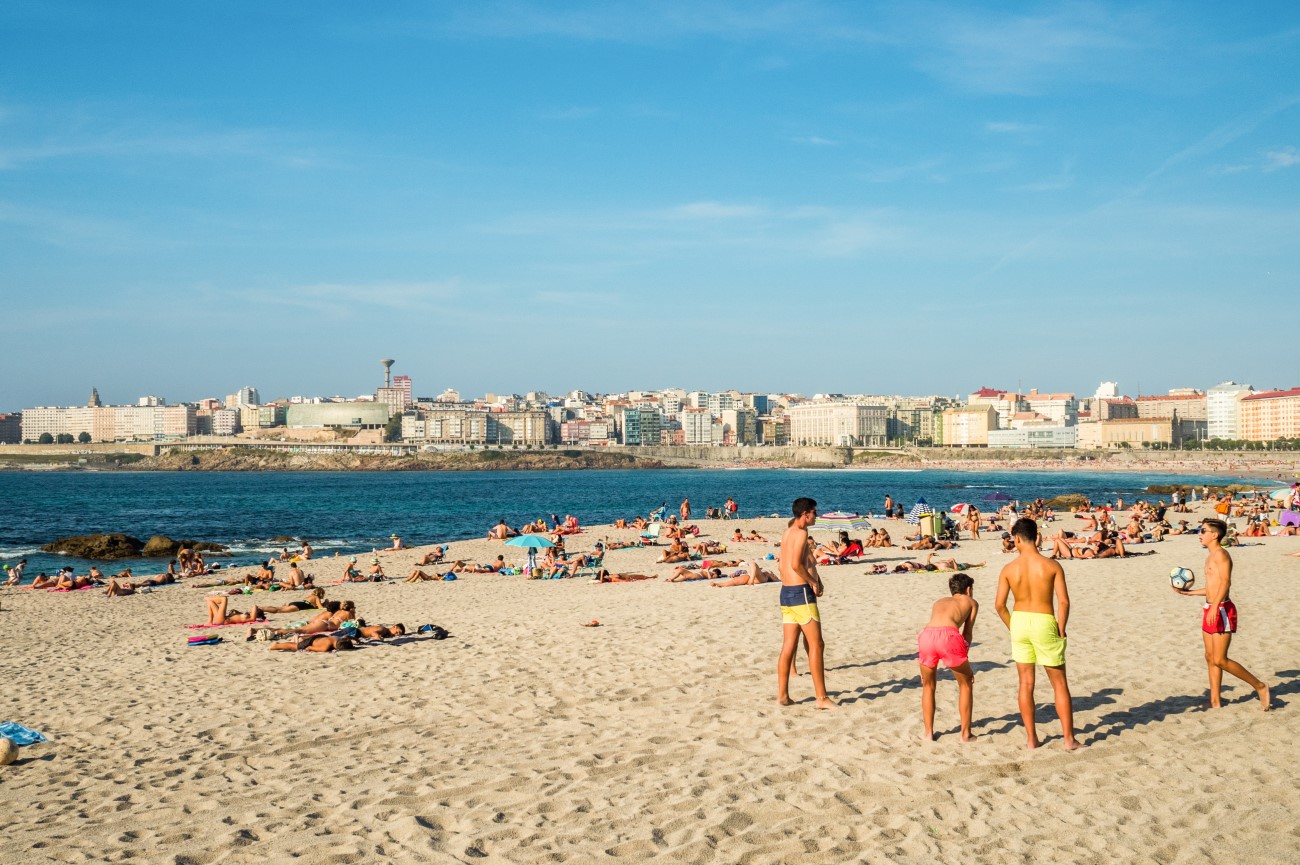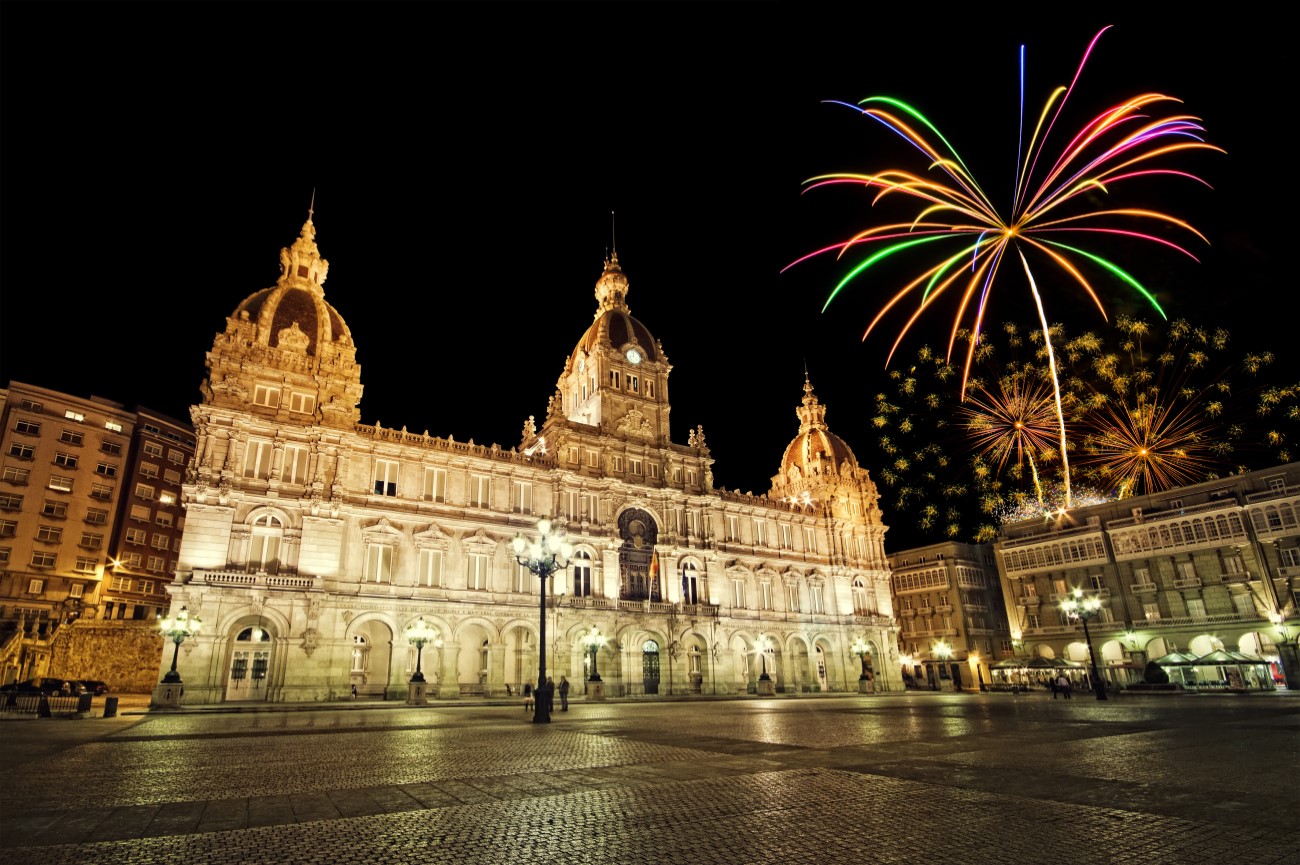Things to do in A Coruña, Spain
A Coruña is a cultural city that occupies a significant amount of the Galician coast in the north of Spain. Besides the lively food scene and cultural sights, this city is the perfect getaway for some days under the sun—thanks to its beautiful beaches.
The city houses the world's oldest working lighthouse, the Torre de Hércules which dates back to the Roman era. Must-do activities include wandering in the Paseo Marítimo, a 13km walkway and bike path that starts in the port and runs alongside the beaches.
Of course, you can’t miss the delicious seafood and the local beer, Estrella Galicia. Follow our two-day itinerary below to discover the best things to do in A Coruña, including where to eat and where to stay.
Day 1

Morning: Avenida de la Marina
A Coruña is known as the Ciudad de Cristal (City of Glass) thanks to boulevards like this one. When walking around Avenida de la Marina, it's impossible not to notice its striking glass galleries built in the 19th century. Designed by Juan de Ciórraga, the galleries were once home to local fishermen. As a see-through building, it allowed them to face the marina at all times. You can find another one of these galerías (enclosed glass balconies) at Avenida Montoto.
Igrexa de Santiago
From Avenida de la Marina, head to the Igrexa de Santiago, the oldest church in A Coruña. Built in the 12th century, during the Romanesque period, it was later remodelled with Gothic elements, and today you can admire the façade's grotesque figures.
Xardín de San Carlos
A few steps from the church is the Xardín de San Carlos. Located in the old town of A Coruña, this garden and its walls were part of a defensive castle built to protect the city around the 14th century. The British General Sir John Moore was buried here, after being killed in the nearby Battle of Elviña in 1809.
Afternoon: Castillo de San Antón
Since you're already around the old town, consider heading to Castillo de San Antón. This 16th-century castle sits on a small island, connected to the mainland through a bridge. Nowadays, it houses the Museo Arqueológico e Histórico (Museum of Archeology and History), where you can learn a bit more about A Coruña's history.
Museo Militar
Next stop is the Museo Militar. This Military Museum displays a variety of pieces related to the city's past. The elements exhibited range from the 17th to the 20th century and include a collection of arms, uniforms, ammunition, flags, and so much more. The museum also hosts a fair number of temporary exhibitions, concerts, and military movies.
Igrexa de Santo Domingo
Just a few minutes from the Museo Militar, you’ll find the Igrexa de Santo Domingo. The original Santo Domingo convent was located outside the city walls, but it was destroyed by the British in 1589. It was only in the 17th century that the church moved to its current location. Today, the building stands out with its imposing Baroque design. The inside, in comparison, is fairly modest, with the exception of the gilded altar and the organ.
Old Town
Spend the rest of the afternoon exploring the city’s old town. Also known as Casco Antiguo, this area is surrounded by important monuments, restaurants and cafés. It's the perfect place to stop for a drink or to have a bite of the delicious tarta de Santiago, a traditional almond cake. Make sure to pass by the María Pita square and head to its Casa Museo if you feel like learning a bit more about this famous local heroine.
Beaches
From the old town, follow the road towards the seaside. The city’s 1.4km sandy stretch includes two beaches. The closest one to the centre is Playa del Orzán and further west is the Playa de Riazor. This last one is also a popular destination for surfers.
Casa de las Ciencias (Santa Margarita park)
End the day with a stroll around the Parque Santa Margarita. Inside this large urban park is the Casa de las Ciencias, an interactive science museum. Occupying an old palace, it offers several exhibition rooms dedicated to science, technology and the natural world. The building's dome is home to a planetarium, where you can learn more about the planets and constellations.
Day 1 - A Coruña Tour Map
Day 2

Morning: Campo da Rata
Overlooking the ocean on the northeast coast of the city is Campo da Rata. Visitors head here for the views but also to see the collection of menhirs placed here in 2003. Known as the “Menhires por la Paz” or Menhirs for Peace, it’s a recent landmark designed by Galician sculptor Manolo Paz. Each of the menhirs has a small hole in the middle, creating a window to the sea. Alongside these, there’s another monument created by Isaac Díaz Pardo resembling prehistoric megaliths. It’s a homage to all the people who suffered during Franco’s repression era. The stains of red paint scattered across the granite columns represent the blood of the executed.
Torre de Hércules
About 15 minutes away from Campo da Rata you’ll find Torre de Hércules, the world's oldest working lighthouse. Built by the Romans around the 1st or 2nd centuries, this important landmark has since become a city symbol. Designated as a UNESCO World Heritage Site, the lighthouse offers spectacular views over the city—but prepare yourself to climb more than 200 steps to reach the top.
Playa de las Lapas
Playa de las Lapas is the closest beach to the Torre de Hércules. It's a lovely spot for swimming and sunbathing. The beach is surrounded by ample green space and lined by a beautifully illuminated promenade.
Domus Casa del Hombre
Continue walking along the Paseo Marítimo until you reach the Domus. Also known as Casa del Hombre, this building houses the Museum of Humankind. It's the first interactive museum focusing on human beings and all of their complexity. Designed by Arata Isozaki, a Japanese architect, here you’ll find exhibitions related to the study of senses, the brain, the heart, demography and the evolution of language.
Afternoon: Museo de Bellas Artes
In the afternoon head over to the Museo de Bellas Artes. This fine arts museum showcases a variety of paintings by famous artists like Picasso, Rubens, Sorolla and Tintoretto. Other highlights include a collection of Goya's prints and an exhibit of Galician Sargadelos ceramics from the 19th century.
Igrexa de San Xurxo
The Igrexa de San Xurxo sits between the city market and the Plaza de María Pita. It has a Baroque façade featuring two twin towers and a statue of San Jorge above the main door. The church is famous for being the site of Spain’s first same-sex marriage, which occurred here in 1901 between Elisa and Marcela.
Plaza del Humor
Close to the Igrexa de San Xurxo is the quirky Plaza del Humor. As the name suggests, this square is famous for its funny caricatures. Here you can find statues and drawings of famous personalities, from the Pink Panther to Cervantes.
Casa Museo Picasso
Next stop is the Casa Museo Picasso. This is where Pablo Picasso lived from age 9 to 13, between 1891 to 1895. The apartment showcases copies of some of the painting's Picasso did while living there. You’ll need to ring the bell to enter.
Mirador Monte de San Pedro
Mirador Monte de San Pedro is one of the city's most special viewpoints. You should get there by sunset and hop on the Ascensor Panorámico, a huge glass lift that will take you to the top. Once there, you can dine at Restaurante Mirador San Pedro. The venue includes a fine dining restaurant, a café, a wine cellar and a cigar lounge.
Day 2 - A Coruña Tour Map
Day Trips From A Coruña
- Betanzos: Alongside A Coruña, Betanzos used to be a thriving Spanish port. Today, this town is famous for its lively restaurants and well-preserved medieval centre.
- Pontedeume: It's above the Eume estuary that you’ll find Pontedeume and its small old town. Like many seaside towns in the region, this one also houses galleried houses, plazas, tapas bars and restaurants. Make sure to visit the town’s main road Rúa Real.
- Rías Altas: Part of Galicia's northern coast, this is a special region surrounded by beaches and imposing cliffs. The area isn’t that populated and doesn't receive many tourists, making it a perfect spot to escape the crowds. Rías Altas is also known for its delicious seafood, so make sure to try it during your visit.
- Lugo: About an hour away from A Coruña is the town of Lugo. It’s home to some of the most well-preserved Roman walls in the world. Once inside, you can wander around the many traffic-free streets and squares or spend endless hours at the local tapas bars.
- Ferrol: Once a historical battleground, this small port city draws visitors today with its beaches and surf scene. It’s worth exploring the Magdalena district to spot modernist buildings such as Teatro Jofre and climbing up to the Castelo de San Felipe. Ferrol also hosts one of the oldest Holy Week celebrations in Galicia. From here, you can follow the Camino Inglés route to Santiago de Compostela.
- Monasterio de Monfero: You’ll find this Galician monastery in the town of Monfero. Dating back to the High Middle Ages, it was renovated between the 16th and 18th centuries, gaining its current Baroque features. The façade stands out with its four tall pillars and chequered-tiled walls.
- Cascada del Ézaro: Head to the village of O Ézaro, and you’ll stumble upon Cascada del Ézaro, one of the most beautiful waterfalls in Spain. Surrounded by rocky cliffs, the water pours straight from the Xallas River at 40 metres high. You can enjoy the view from the harbour or follow the path that takes you to the base of the waterfall for an even closer look.
- Santiago de Compostela: From A Coruña, it will take you about an hour to reach Galicia’s capital by car. You can also walk to Santiago de Compostela, following thousands of pilgrims who venture on the Camino de Santiago. Don’t miss a visit to the city’s cathedral and the nearby monasteries.
- Cape Finisterre: On the west edge of Galicia, overlooking the sea, is the Cape Finisterre. During the Roman era, people believed this was the end of the known world, hence the name Finisterre, meaning “end of the earth” in Latin. Today this is the finish line for some pilgrims who decide to continue their journey past the city of Santiago. Others come here for the sunset or to spend the night at O Semaforo, a hotel set inside the former lighthouse residence.
- Cape Vilan: Set near the village of Camariñas, Cape Vilan is a rocky headland that belongs to the Costa da Morte. Standing at 125 metres high, the cape and its lighthouse mark one of the most dangerous sections of this coastal stretch used to prevent sailors from wrecking their boats. There’s a staircase leading to a top deck, allowing you to enjoy the stunning views of the Atlantic and the waves crashing beneath you.
- Cape Ortegal: Another cape worth visiting, Ortegal is part of a mountainous peninsula located a few miles north of Cariño. A wavy road leads you to the lighthouse with its striking red and white tower. Some of the best barnacles in Galicia come from around here.
- Loiba Cliffs: Part of the San Julián de Loiba municipality, these cliffs arise between the port of Espasante and the Cape Estaca de Bares. Driving along the coast, you can admire its rugged landscape and the ocean views. In 2009, a local man added a wooden bench on the edge of a cliff, now nicknamed the “best bench in the world”, attracting thousands of visitors. Beneath the cliffs, there are also sandbanks that emerge at high tide and small caves known as furnas.
- Las Catedrales beach / As Catedrais: Close to Ribadeo, this beach gets its name from the Gothic-style rock formations created by sea erosion through the years. You can admire the views from the top of the cliff or get lost inside the sea caves. The best time to come here is during low tide, when you can access the sandy stretch. During Semana Santa or in the summer season you need a permit (available online) to get down, as it gets quite busy. You can get here by bus from the Ribadeo tourist office or walk from the Esteiro train station.
Top Things to Do With Kids in A Coruña
A Coruña offers many family-friendly activities. Kids will enjoy exploring the grounds of the Castillo de San Antón and taking pictures at Plaza del Humor. During the summer, families can also take a trip down to one of the city’s beaches. Other attractions worth visiting include the Aquarium Finisterrae and the National Museum of Science and Technology. This museum showcases a variety of scientific instruments and transport vehicles like the front of a Boeing 747 plane.
Where to Eat in A Coruña
A Coruña is home to a series of tapas bars. Pick your favourite and make sure to order some of the specialities: empanadas (pastry tarts filled with different savoury fillings), pulpo a Gallego (Galician boiled octopus) and local cheeses. To pair with your meal, ask for a glass of Ribeiro or Albariño, two famous local wines. Below are some of the best places to eat in A Coruña where you can sample these delicacies:
- O Viñedo de Tito: Beer and seafood lovers will enjoy this cosy bar near the fine arts museum. Inside, tables are made from old wine barrels, and there’s a lively atmosphere. Most of the dishes are cooked outside over hot coals. House specialities include mussels, scallops, grilled sardines and octopus.
- La Bombilla: La Bombilla is the place to go if you want to try traditional tapas. You can either eat inside or outside, at standing tables on the street. Make sure to try the classic tortilla (served with a piece of baguette) or the meatballs with potatoes and calamari (fried squid rings). The signature dish here is the bombas, deeply fried potato bombs with meat.
- El De Alberto: Close to Playa del Orzán, this restaurant serves traditional Galician dishes with a creative touch. Enjoy the cosy rustic environment and try some of its fish and seafood specialities.
- Árbore da Veira: This Michelin-star restaurant is located at the Monte de San Pedro. It has an inviting interior, with large windows facing the ocean. The traditional Galician cuisine is reinvented here as you dive into both taste and visual experience. Dishes are divided into two main menus: the raíz menu (8 courses) and the árbore menu (12 courses).
Where to Stay in A Coruña
- Hotel NH Collection A Coruña Finisterre (5 stars): This is A Coruña's most luxurious hotel, with privileged seafront views. It's the place to stay if you're looking for comfort and excellent service. The rooms are exquisite, decorated in natural tones with marble bathrooms, and some have walk-in closets. The hotel also has a spa, a restaurant, tennis and paddle courts, three large pools and a gym.
- Meliá Maria Pita (4 stars): Close to the Old Town and the Playa del Matadero, this hotel offers the perfect location to explore the city. Its huge glass windows allow you to enjoy the sea views from every angle. Common areas are large and luxurious, with marble-covered walls and a grand piano as a centrepiece. The rooms are also spacious and decorated in golden tones. Other facilities include a small gym and a traditional Galician restaurant.
- Mar del Plata (2 stars): Mar del Plata is only a few minutes away from Playa del Riazor. It offers services like bicycle and beach towel rentals, guided city tours, and even access to Casa del Agua—a nearby spa. The hotel is modernly decorated, with spacious rooms in grey, brown and white tones. There’s also a café serving snacks, drinks and coffee.
Best Time to Visit A Coruña
If you want to make the most of your visit to A Coruña, you should consider visiting during warmer months. This will allow you to enjoy all the cultural sights as well as the beaches. A Coruña experiences low rainfalls and offers pleasant warm temperatures all year round, so it’s hard to go wrong. The best time to visit the city is during July, August and September, with temperatures reaching around 23.9ºC and rarely dropping below 16.8ºC. In the winter, it can get a bit chilly and rainy, so keep that in mind when planning your visit.
A Coruña Festivals
- Carnival: Carnival Tuesday is one of the top events in A Coruña. Locals play dress up and embrace the party spirit with a lively colourful procession.
- San Juan: San Juan celebrates summer's arrival. This festival usually begins in May and ends in late June. During that time you can expect to see recitals, concerts, dancing shows and exhibitions all over the city. Even though the festival lasts for more than two months, the most important day is the 23rd of June, when the city hosts a large parade. Make sure to try some grilled sardines at one of the outdoor food stalls.


